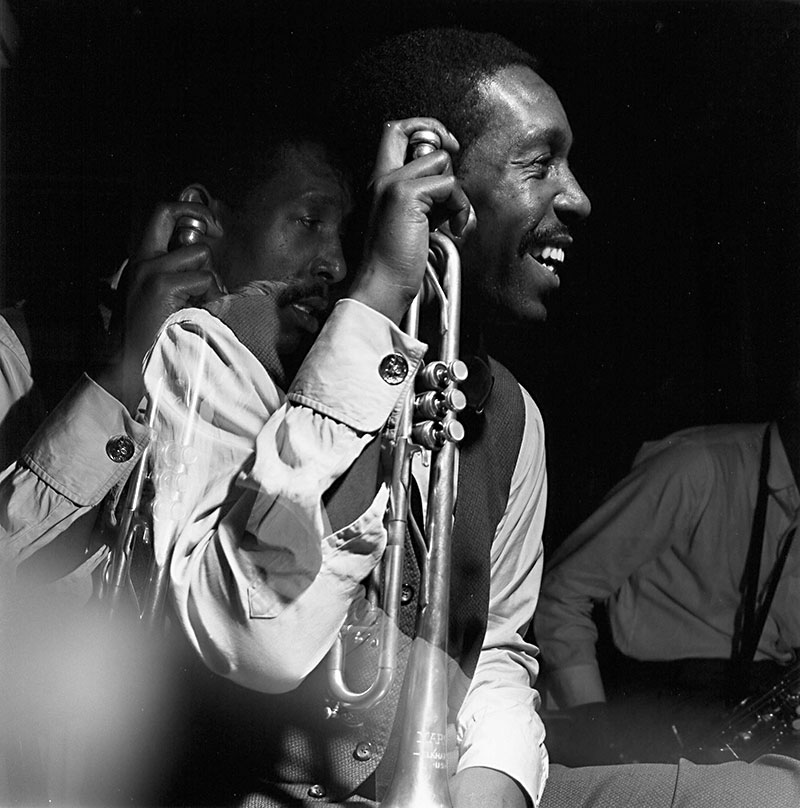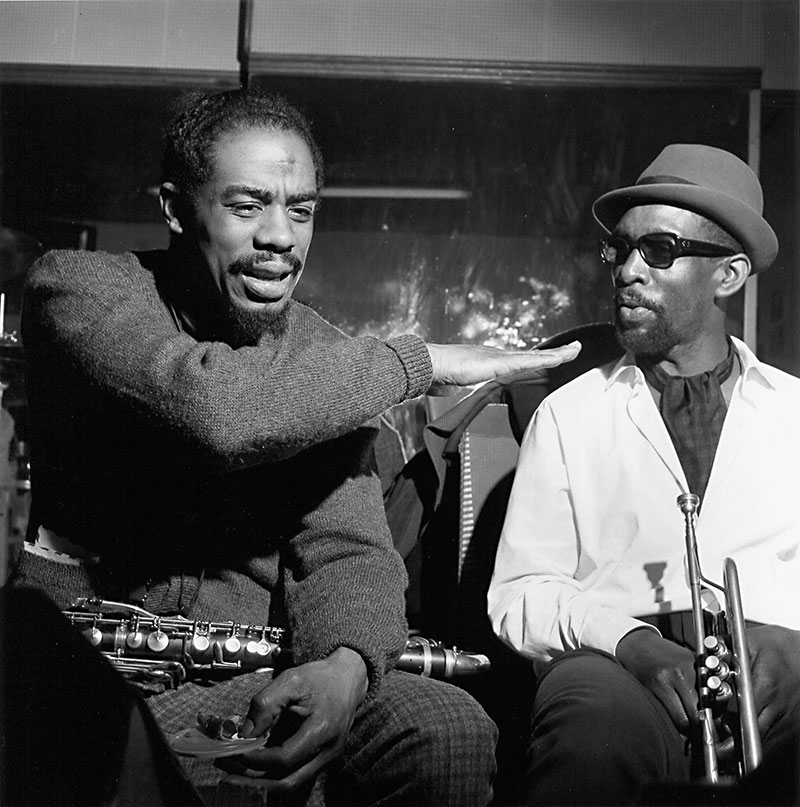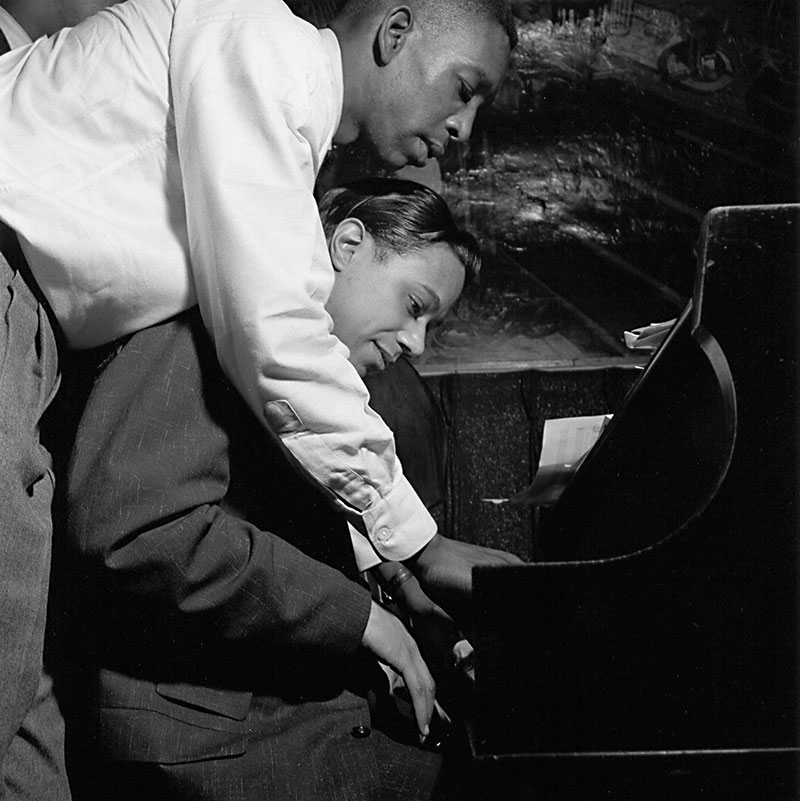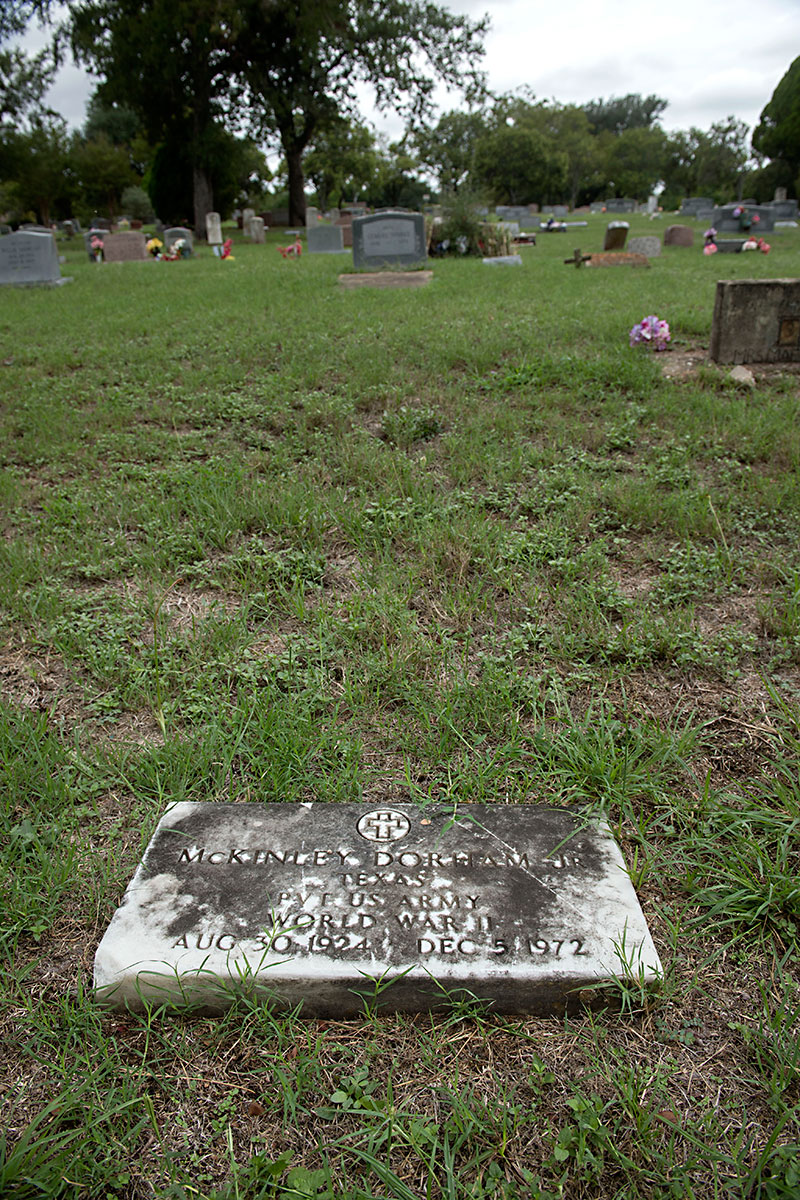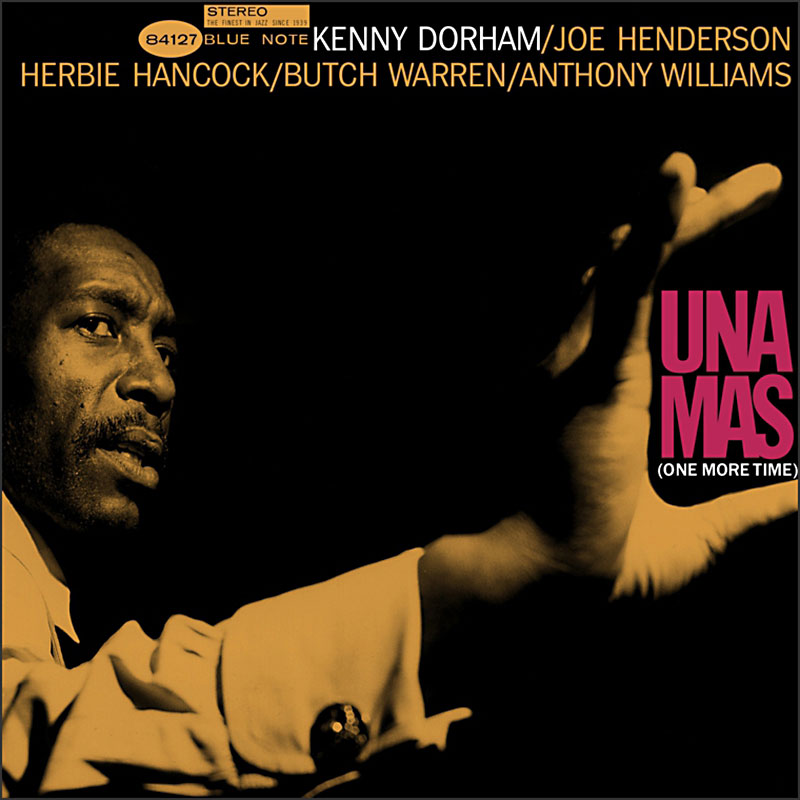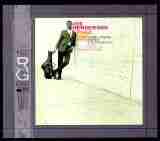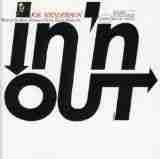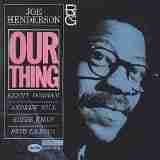Featuring the Musics and Aesthetic Visions of:
TEDDY WILSON
(July 14-20)
GEORGE WALKER
(July 21-27)
BILLY STRAYHORN
(July 28-August 3)
LEROY JENKINS
(August 4-10)
LAURYN HILL
(August 11-17)
JOHN HICKS
(August 18-24)
(August 18-24)
ANTHONY DAVIS
(August 25-31)
RON MILES
(September 1-7)
RON MILES
(September 1-7)
A TRIBE CALLED QUEST
(September 8-14)
NNENNA FREELON
(September 15-21)
KENNY DORHAM
(September 22-28)
KENNY DORHAM
(September 22-28)
FATS WALLER
(September 29-October 5)https://www.allmusic.com/artist/kenny-dorham-mn0000768027/biography
Kenny Dorham
(1924-1972)
Artist Biography by Ron Wynn
Kenny Dorham
had a deeply moving, pure tone on trumpet; his sound was clear, sharp,
and piercing, especially during ballads. He could spin out phrases and
lines, but when he slowly and sweetly played the melody it was an
evocative event. Dorham
was a gifted all-round trumpeter, but seldom showcased his complete
skills, preferring an understated, subtle approach. Unfortunately, he
never received much publicity, and though a highly intelligent,
thoughtful individual who wrote insightful commentary on jazz, he's
little more than a footnote to many fans.
Dorham studied and played trumpet, tenor sax, and piano. He was a bandmember in high school and college; a college bandmate was Wild Bill Davis. Dorham started during the swing era, but was recruited by Dizzy Gillespie and Billy Eckstine to join their bands in the mid-'40s. He even sang blues with Gillespie's band. He recorded with the Be Bop Boys on Savoy in 1946. After short periods with Lionel Hampton and Mercer Ellington, Dorham joined Charlie Parker's
group in 1948, staying there until 1949. He did sessions in New York
during the early and mid-'50s, making his recording debut as a leader on
Charles Mingus and Max Roach's Debut label in 1953. He then cut Afro-Cuban for Blue Note with Cecil Payne, Hank Mobley, and Horace Silver in 1955.
Dorham was a founding member of Art Blakey's Jazz Messengers in 1954, and also led a short-lived similar band, the Jazz Prophets. Dorham played on the soundtrack of A Star Is Born in 1954, then spent two years with Max Roach from 1956 to 1958. There were dates for Riverside in the late '50s with Paul Chambers, Tommy Flanagan, and Art Taylor,
plus other sessions with ABC-Paramount, three volumes for Blue Note
done live at the Cafe Bohemia, and an intriguing but uneven session with
John Coltrane and Cecil Taylor, Coltrane Time, in 1958.
Dorham
taught at the Lenox School of Jazz in 1958 and 1959, and wrote scores
for the films Les Liaisons Dangereuses and Un Témoin dans la Ville in
1959. During the mid-'60s, he co-led a band with tenor saxophonist Joe Henderson that was shamefully neglected. There were such classic Blue Note releases as Whistle Stop, Una Mas, and Trumpet Toccata. Dorham made one album for Cadet in 1970, Kenny Dorham Sextet, with Muhal Richard Abrams. He died in 1972. Several of his Blue Note albums have been reissued, while his Prestige and Riverside
dates have come out in sporadic fashion, some in two-record samplers.
Other material for Pacific Jazz, United Artists, Steeplechase, Xanadu,
and Time isn't as widely available.
http://kennydorham.jazzgiants.net/biography/
Biography
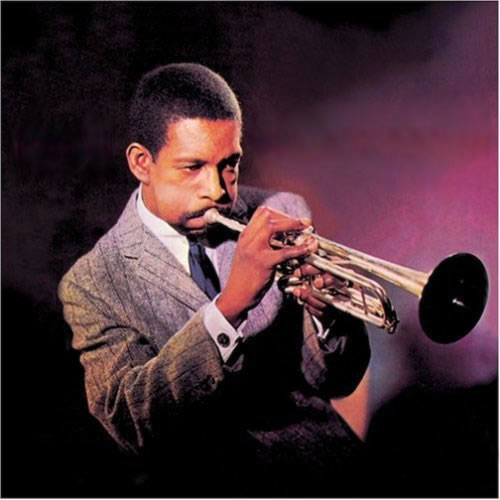
McKinley
Howard “Kenny” Dorham was born on August 30, 1924 in Fairfield, Texas
and passed away on December 5, 1972 in New York City at the age of 48.
Born into a musical family, Dorham began playing piano at age seven
and switched to trumpet while attending Anderson High School in Austin.
Music was not Dorham’s only hobby as a teenager; he spent much of his
time in the boxing ring as a member of the school boxing team.
Dorham briefly attended Wiley College in Marshall, Texas, where he
studied chemistry and physics while performing in the dance band
alongside musicians such as trumpeter “Wild” Bill Davison, saxophonist
Harold Land, and drummer Roy Porter. It was in this group that Dorham
first began honing his arranging and compositional skills.
Dorham was drafted into the Army in 1942 and joined their boxing
team. In 1943 after his discharge, he worked with the orchestra of
trumpeter Russell Jacquet, the brother of saxophonist “Illinois”
Jacquet, in Houston before joining Frank Humphries’ band in 1944.
In 1946, Dorham got his first major gigs, joining the trumpet section
in Dizzy Gillespie’s original big band and then replacing Fats Navarro
in Billy Eckstine’s band at Diz’s recommendation.
Dorham was now associating with the most modern players on the jazz
scene, recording in 1946 and 1947 with the likes of drummer Kenny
Clarke, pianist Bud Powell, saxophonist Sonny Stitt, and drummer Art
Blakey. He also played in the big bands of Lionel Hampton and Mercer
Ellington. Dorham made his mark as an arranger as well, arranging charts
for Lucky Millander (“Okay for Baby”), Benny Carter, Cootie Williams
(“Malibu”), and ghosting arrangements for Gil Fuller.
In 1948, he studied composition and arranging at the Gotham School of
Music under the G.I. Bill. In December 1948, Dorham got his first big
break as Miles Davis recommended him as his replacement in Charlie
Parker’s quintet. Dorham performed for the first time with Parker on
Christmas Eve at the Royal Roost in Manhattan, with pianist Al Haig,
bassist Tommy Potter, and Max Roach on drums. The gig, which was
recorded, included a festive take on “White Christmas.”
Dorham stayed with Parker into 1949, recording on one of the
altoist’s most solid Verve sessions, which produced the tracks
“Passport,” “Visa,” “Segment,” and “Cardboard.” Following their return
from the Paris Jazz Fair at the end of May 1949, Dorham was replaced by
Red Rodney. He returned to Parker’s group intermittently as a
replacement over the next few years, notably on March 4th, 1955 at
Birdland: Parker’s final performance before his untimely death seven
days later.
Finding it difficult to make a living as a jazz trumpeter, Dorham
moved to California from 1950 to 1952, where he worked day jobs. He then
moved back east, settled in New York and began freelancing, working
with the likes of Bud Powell, Sonny Stitt, and Mary Lou Williams. He
recorded with Thelonious Monk on May 30, 1952, on tracks which ended up
on Monk’s release, Genius of Modern Music Volume 2. He led his
first session as a leader on December 15th,1953, with Jimmy Heath on
saxophone, Walter Bishop on piano, Percy Heath on bass, and drummer
Kenny Clarke, which was released by Debut as Kenny Dorham Quintet.
Work followed with altoist Lou Donaldson and tenorman Sonny Rollins
before Dorham replaced Clifford Brown in Horace Silver and Art Blakey’s
Jazz Messengers, recording their co-led hard-bop classic Horace Silver and the Jazz Messengers album for Blue Note in November 1954 and February 1955.
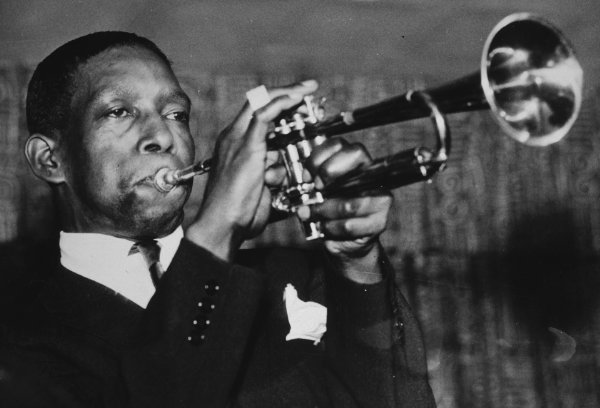
Dorham’s
fleet lyricism is showcased on “Hankerin’,” his running style and taste
for melodic logic on “The Preacher,” and he blows some of his best
blues choruses on Silver’s funky classic “Doodlin.’” Dorham also plays
spiritedly on The Jazz Messengers at Café Bohemia Vols. 1-3, which was recorded on November 23rd, 1955.
Dorham also recorded what many believe was his greatest album for Blue Note in 1955, Afro-Cuban. Recorded
in two sessions, on January 30, 1955 with a sextet, and March 29,1955
with a nonet, this album showcases Dorham’s interest in combining Latin
music with jazz and his distinct compositional and arranging skills. It
also features a who’s who of Blue Note hard-boppers—Hank Mobley, Cecil
Payne, J.J. Johnson, Art Blakey, Horace Silver, Percy Heath and Oscar
Pettiford. “La Villa,” taken from the sextet session, features fine
blowing by all.
Dorham led a short-lived group called the Jazz Prophets in 1956 which
featured J.R. Montrose on tenor sax, Sam Jones on bass, Arthur Edgehill
on drums, and Dick Katz on piano, who was later replaced by Bobby
Timmons. The group recorded for Blue Note at the Café Bohemia and three
albums were released under Dorham’s name:‘Round About Midnight at the Café Bohemia Vols. 1-3.
Dorham also recorded in 1956 with the likes of Tadd Dameron, Phil
Woods, Cecil Payne, Matthew Gee, Hank Mobley, Sonny Rollins, Gil Melle,
and Ernie Henry.
After Clifford Brown’s tragic death in a car accident in September of
1956, drummer Max Roach called upon Dorham to replace the great
trumpeter in his quintet. Dorham stayed with Roach for nearly two years,
and is heard on Jazz in 3/4 Time (which features the trumpeter
alongside Sonny Rollins on “Blues Waltz” and “Lover,” Max Roach + Four, Max Roach 4 Plays Charlie Parker, and Max.
Dorham’s own Jazz Contrasts was recorded in 1957, teaming him
with Roach frontline mate Sonny Rollins on “I’ll Remember April” and
also accompanied on half of the tracks by harpist Betty Glamann. After
the Roach group disbanded, Dorham recorded some memorable albums as a
leader in 1958 and 1959, including his pristine Quiet Kenny, which featured “Blue Spring Shuffle,” and even a vocal album, Kenny Dorham Sings and Plays: This Is the Moment.
Dorham also performed on one of the more unusual albums of the 1950s
alongside John Coltrane and the avant-gardist Cecil Taylor, who forces
his uncompromising, vigorous piano playing into an otherwise
hard-bop-oriented affair. The uneven album would be ultimately released
on Blue Note as Coltrane Time in 1962. Other session work included dates with Abbey Lincoln, Betty Carter, Jackie McLean, Oliver Nelson, and Eric Dolphy.
In 1961, Dorham recorded the fantastic album Whistle Stop for
Blue Note. In 1963, he began a prolific partnership with tenorman Joe
Henderson. The trumpeter was an early proponent of the young tenorist,
and his brilliant Una Mas was Henderson’s first recording
session. Dorham was now associating with musicians over ten years his
junior, and their forward-thinking ways pushed the trumpeter into
greater, more daring territory. In particular, Henderson’s harmonically
adventurous improvisations forced Dorham to intensify his own playing
and include more open modal structures within his compositions.
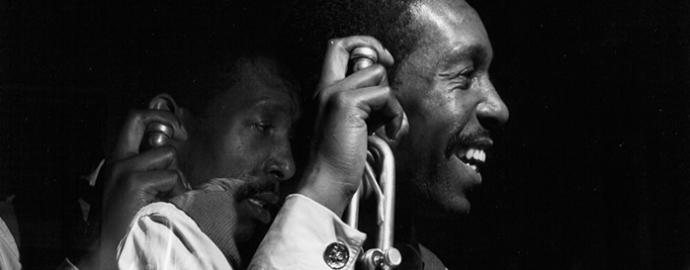
“Una Mas” featured Herbie Hancock, Butch Warren, and Tony Williams in
the rhythm section, backing Dorham as he blows one of his more
aggressive and bold statements on record. Dorham’s most lasting
contribution to the jazz canon, “Blue Bossa,” was the opening track on
Henderson’s first album as a leader, Page One. Henderson’s Our Thing followed in 1963, which featured a swinging title track, and his In ‘n Out was recorded in 1964.
The intrepid pianist Andrew Hill requested both Henderson and
Dorham’s services on his breakout, avant-garde Blue Note masterpiece Point of Departure in
1964. Now nearly forty years old, Dorham is audibly pushing himself in
the company of these younger progressives, deeply investigating the
possibilities inside Hill’s ambiguously open harmonies with intense
arpeggios, repeated intervals and contrasting lyrical flurries. Listen
to his edgy improvisation on the fiery “Refuge.”
Dorham recorded his final session as a leader, Trumpet Toccata,
later that year. He became less active into the later 1960s and as he
again found it difficult to make a living playing jazz trumpet; he found
work at times at a sugar refinery, the post office, and medical plants.
He recorded with Cedar Walton, Toshiko Akiyoshi, Barry Harris, and
Clifford Jordan in the late 1960s while also writing record reviews for Down Beat magazine.
Dorham continued to study music at New York University, was a
consultant for the Harlem Youth Act anti-poverty program, and held a
position on the board of the of the New York Neophonic Orchestra. By
1970, his health began to seriously deteriorate and a kidney ailment
forced him into fifteen hours of weekly dialysis at a local hospital. He
died on December 5, 1972 of kidney failure.
 Kenny Dorham
Kenny Dorham
Overshadowed for most of his career by the likes of Dizzy Gillespie,
Fats Navarro, Miles Davis, Clifford Brown, and Lee Morgan, Kenny
Dorham's abilities as a composer and unique voice as an advanced bop
trumpet player are underrated to this day.
McKinley Howard Dorham
was born on August 30, 1924 on a ranch called Post Oak, near Fairfield,
Texas. He attended Anderson High School in Austin, where he began
teaching himself to play piano and trumpet, and spending much of his
time on the school boxing team. He later enrolled at Wiley College in
Marshall, Texas, studying chemistry and minoring in physics. During this
time he experimented with arranging, writing for the stage band, where
he met such players as Wild Bill Davis, Harold Land, and Roy Porter.
He was drafted into the army in 1942 (spending some time with the army boxing team) and was discharged about a year later.
In
late 1943 he joined the Russell Jacquet orchestra in Houston, and he
spent much of 1944 playing the band of Frank Humphries. By 1945, Dorham
had gained positions with Dizzy Gillespie's short-lived first big band,
and then replaced Fats Navarro in Billy Eckstine's orchestra. In 1946 he
recorded with the Be Bop Boys (aka the 52nd Street Boys, including Fats
Navarro), and spent time playing in the bands of Lionel Hampton and
Mercer Ellington.
During this time, Dorham continued to compose
and arrange (he arranged “Okay for Baby” for Lucky Millinder and Benny
Carter, and “Malibu” for Cootie Williams), ghosting arrangements for
Walter 'Gil' Fuller which were sold to several name big bands, including
Harry James, Jimmy Dorsey, and Gene Krupa.
In 1948, Dorham
studied composition and arranging at the Gotham School of Music under
the G.I. Bill. On Christmas Eve of that year, Dorham performed for the
first time as replacement for Miles Davis in the Charlie Parker quintet,
where he would play for about a year (Davis had recommended Dorham for
the job), including an appearance at the 1949 Paris Jazz Fair.
After
a two-year hiatus starting in 1950, during which Dorham lived and
worked day jobs in California, he settled in New York City and began a
busy career as a free-lance musician, perorming with players such as Bud
Powell, Sonny Stitt, Thelonious Monk, and Mary Lou Williams. In 1952
Dorham recorded with Monk and in late 1953 led his first recording as a
leader, a 10-inch record on the Debut label.
In 1954, Dorham
replaced Clifford Brown with Art Blakey's Jazz Messengers when Brown
left the group to form the legendary Brown/Roach quintet, and that same
year formed a band called the Jazz Prophets which recorded for Blue
Note. Dorham left Blakey's band in late 1955, and shortly found work
playing with the Birdland All-Stars (along with Conte Candoli, Phil
Woods, and Al Cohn) and recording with the likes of Tadd Dameron, Phil
Woods, Cecil Payne, Matthew Gee, Hank Mobley, and Gil Melle.
In
August, 1956, Dorham recorded some interesting material for Riverside
with alto saxophonist Ernie Henry. Upon Clifford Brown's untimely death
in September of that year, Dorham replaced him in Roach's group, an
association which would produce several EmArcy recordings and last
almost two years.
Once Roach disbanded the group in 1958, Dorham
led several groups of his own, recording for Riverside (including a
vocal album! and the notable Quiet Kenny), New Jazz, and Time.
In
1961 began a fruitful period recording again with Blue Note records,
where he recorded some of his most significant albums, especially with
up-and-comers Joe Henderson, Herbie Hancock, and Tony Williams.
By
the mid-1960s, economic circumstances made it impossible for Dorham to
maintain his group with Henderson, and he was forced to find employment
outside of music (this time working for the post office). He still
studied music (at the NYU School of Music) and wrote record reviews for
Down Beat magazine, but by the early 1970s his health began to
deteriorate; development of a kidney ailment forced him to make regular
hospital trips for 15 hours a week on dialysis. He passed away at the
age of 48.
Source: Jeff Helgesen
This
week, a secondary figure in jazz is receiving a primary re-evaluation.
Kenny Dorham, who died of kidney disease in 1972 at the age of 48, was a
trumpet player of authority and great style; he moved from his early
days in the be-bop era to the 1960's progressions of the music
gracefully, without showing the permanent markings of his youth.
The
clean, soft definition of his tone, and his writing on albums like
''Una Mas'' and ''Quiet Kenny'' -- and such commonly played tunes as
''Blue Bossa'' -- have influenced many contemporary players; he was a
composer whose tunes are still played, a pianist, a singer and possibly
the most famous jazz musician to write a considerable amount of jazz
criticism, for Downbeat magazine, for which he was a staff reviewer in
the mid-1960's. But for many reasons -- he wasn't a leading force of any
particular school and some of his most memorable tunes appear on other
people's albums -- he has been a little difficult to canonize.
That's
where Don Sickler, the trumpeter, arranger, producer and music
publisher, steps in. The pro forma reason for presenting six days of
Dorham's music at the Jazz Standard, through Sunday night, is that
Dorham would have been 75 this year. The real reason is that Dorham's
music is still underplayed and underappreciated. Mr. Sickler is a
low-profile crusader: where exhaustive tasks concerning the modern jazz
of the 1950's and 60's are being suggested he is often first in line,
because his vested interests lie in both performance and preservation.
Through his company, Third Floor Music, he has published arrangements of
Dorham's music for the educational field, and has convinced band
directors and band leaders to play some of it.
Mr.
Sickler is not famous enough to put his own career as a musician ahead
of his behind-the-scenes work, and band leading does not suit him
constitutionally. ''I was never one of those guys carrying my horn
around to clubs and trying to sit in,'' he said recently. ''I'm
basically sitting at home and I'm a workaholic, doing arrangements,
producing records.''
Mr.
Sickler did not know Dorham, and saw him play only a few times. Mr.
Sickler completed his music degree at Manhattan School of Music in 1970
and he played at Broadway shows, weddings, bar mitzvahs and with jazz
and rhythm-and-blues bands. He was soon working in the music business
for United Artists, as production manager for the print division in
their publishing arm, and doing a lot of transcribing himself; that's
when he had his epiphany about Dorham's work. ''I was always attracted
to his music,'' said Mr. Sickler. ''And I didn't really know why until I
started transcribing it. I realized the intricacies he put in for the
rhythm section.''
''With
Kenny Dorham's music, you can't just take a lead sheet,'' Mr. Sickler
said of a skeletal score showing only the melody and chord changes of a
piece, ''and hand it out to the bass player, the pianist and the
drummer, expecting to get what he did on the records.''
''Once
he started getting involved with Hank Mobley and the Jazz Messengers,
his rhythm-section approach became very unique,'' he said. ''Every
player has his own little role, and you really have to write out parts
for each to make it work. Most guys still try to take Dorham's stuff,
make a lead sheet and hand it out to everybody, and wonder why they
can't get it to work.''
Mr.
Sickler believes that Dorham's compositional talent flowed from the
great rhythm sections he worked with. ''Dorham always worked with the
great drummers: Art Blakey, Kenny Clarke, Max Roach,'' he said. ''The
drummers are the ones that define the music, no matter what anybody
says, and Kenny had the ability to know how to write for the drummers,
to get the drummers to play their music. You listen to tunes like
'Minor's Holiday' and you know that's written for Blakey.''
Accordingly,
this week at the Jazz Standard the rhythm section includes two
musicians who knew Dorham and performed with him: the bassist Ron Carter
and the pianist Ronnie Mathews as well as a jazz scholar, the drummer
Kenny Washington, who has worked extensively as a disc jockey on the
jazz radio station WBGO (88.3-FM).
Tonight's
program will focus on the recordings Dorham made with the saxophonist
Joe Henderson. As he has done through the week, Mr. Sickler is to play
the trumpet and the young tenor saxophonist Mark Shim is to play the
saxophone.
Tomorrow
night's program, ''As I Live and Breathe,'' creates a kind of Kenny
Dorham songbook: vocalized versions of his instrumental tunes, songs he
sang on one record he made for Riverside in the late 50's with his
light, swooping blues voice, as well as two originals he wrote and never
recorded; Roberta Gambarini, an Italian vocalist who was a finalist in
last year's Thelonious Monk vocal competition, is to sing.
Sunday's
concert, ''Blues in Be-Bop,'' honors Charlie Parker's birthday, so a
set of tunes that Dorham performed with Parker in the mid-40's will fill
the program; the saxophonist Ralph Moore is to be a guest.
A Celebration
The
Kenny Dorham 75th-birthday celebration is at the Jazz Standard, 116
East 27th Street, Manhattan. Sets through Sunday are at 8 and 10:30 P.M.
The cover charge is $20 tonight and tomorrow, $15 on Sunday; there is
also a $10 minimum all evenings. Information: (212) 576-2232.
Correction: August 31, 1999
An article in Weekend on Friday about the trumpeter Kenny Dorham
misstated the name of the company owned by the trumpeter, arranger and
music producer Don Sickler, which has published arrangements of Dorham's
music. It is Second Floor Music, not Third Floor Music.
A version of this review appears in print on August 27, 1999, on Page E00027 of the National edition with the headline: Kenny Dorham, From Be-Bop On.
In Miles Davis' autobiography, one of the mightiest forces in music, let alone jazz, recounts a 1956 winter date at Cafe Bohemia, a onetime Greenwich Village staple. The trumpeter hadn't yet banished saxophonist John Coltrane and all-time drummer Philly Joe Jones from his short-lived "first great quintet" despite both addicts having become liabilities. Davis' critical confirmation from the four-album Prestige Records run with the quintet and his indomitable Columbia Records debut, 'Round About Midnight, remained imminent.
His friend Dorham asked if he could sit in. Davis rarely ceded the stage to anyone, but he loved and respected the Texas-born trumpeter, whom he recognized as a peer. In the only anecdote of its kind in the book, the bandleader recalls working over the packed venue before introducing his guest. Dorham swelled in his trademark romantic elegance to the chagrin of the infamously prideful Davis, who quickly realized he was being buried alive.
In search of solace afterward, Davis asked saxophonist Jackie McLean how he had sounded: "[Jackie] looked me straight in the eye and said, 'Miles, tonight Kenny is playing so beautiful, you sound like an imitation of yourself.'"
Davis gathered his possessions angrily, including his self-esteem, and walked out without saying a word. He glanced over at his compatriot, who he remembered "had this shit-eating grin on his face and was walking like he was 10 feet tall."
"[Dorham] knew what had gone down – even if people in the audience didn't," wrote Davis about his defeat, residual steam still evident in 1989. "He knew, and I knew what had happened."
Dorham wanted the audience to know. He had come all this way to tell them before it was too late.
McKinley and Minnie Dorham (née Manning), a sharecropper and homemaker respectively, had four children in all: Eva Lois Manning, Kenny, Cloteat, and Joel, who would become a noted Bay Area jazz musician. "Fragments" begins by reminiscing about the sounds of the "big Southwest" during its author's youth in Post Oak, an unincorporated community three miles south of Fairfield in central Freestone County. Aspiring to either a "top cowhand" or "a hobo" because they train-hitched and sang songs of the frontier, Dorham might have craved the land's inherent freedom as an antidote to the sick norms of Jim Crow Texas.
Thumping out boogie-woogie piano at age 7, he picked up the trumpet some three years later. Dorham asserts that his sister recognized, and ostensibly spoke into existence, her little brother's prodigious talent. She bought him his first trumpet at age 15, a silver Conn model.
By 1936, the family settled in Austin, east of then-East Avenue (now I-35) with the bulk of the city's black families. Dating back to at least the 1940 U.S. Census, 1218 E. 12th remained the Dorham homestead through Minnie's death in 1992. Attending high school at the then-all-black L.C. Anderson, the young horn enthusiast played in the Yellow Jackets marching band under the tutelage of legendary director B.L. Joyce, who chastised him for freelancing more than once.
After school, Dorham jammed at brothers Roy and Alvin Patterson's home at 1709 Washington Avenue. In tow were trombonist Buford Banks, Austin jazz great Martin Banks' father, and trumpeters Paris Jones, Warner Ross, and Gil Askey, the latter of whom gained distinction as a Motown arranger. Starting a prevailing theme throughout his career, Dorham deferred to Hermie Edwards, then Austin's pre-eminent trumpeter.
Following a brief stop at Wiley College, he was drafted into the Army
in 1942 and excelled on the boxing team. After his discharge a year
later, he spent a short stint in California, playing in Russell
Jacquet's big band. Stopping over in Houston, Dorham then made his way
to New York City in 1944, a meteor in search of Dizzy Gillespie.
Career finally off to a running start, he demonstrated first-rate attributes within the big bands of Lionel Hampton, Mercer Ellington, then Gillespie. He soon replaced cherub-faced dynamo Fats Navarro in Billy Eckstine's band. Nevertheless, inconsistencies plagued Dorham, and it showed in early recordings with Navarro.
"Fats had a big, beautiful, round sound, and K.D. had a pretty squeaky sound at that time. We're talking about in the late Forties," explains trumpeter and friend Jimmy Owens. "As time went on, K.D.'s sound became sweeter. When he found that warmth in his sound, he became noticed by the public."
During 1946-47, Dorham freelanced with pianist Bud Powell, saxophonist Sonny Stitt, and charismatic drummer Art Blakey, with whom he'd have less fortunate associations. In 1948, he studied composition at the now-defunct Gotham School of Music, using his G.I. Bill benefits.
He got his first significant break in December 1948, joining sax deity Charlie Parker's quintet at the behest of group predecessor Miles Davis. By his admission, the 22-year-old Davis, at times, could be eaten up by Parker's speed. Dorham quickly presented remarkable maturity – and an ability to keep pace with Bird.
By age 25, the Lone Star blower broadened his tone, consistently rising to Bird's level, whether recording at New York hot spot the Roost or glowing at Paris' first international jazz festival in 1949. Flaunting a unique capacity to speak and sing with his instrument, versus running scales vertically, Dorham added considerable subtlety and discipline to any session.
During his year in Parker's group, an ultimate proving ground, and then subsequent work with pianist Thelonious Monk, Dorham settled neatly into his career-defining melodic and nuanced comportment. Saxophonist Jimmy Heath, now 91, calls him a "romantic."
"He was on that level with Dizzy, on the level with these other guys," says renowned and now retired saxman Sonny Rollins from his home in New York. "And he had a unique sound. Once you heard it, you knew, 'Oh yeah, that's Kenny Dorham.'"
"When you hear the way he plays, you know it's Kenny," echoes avant-garde pianist Steve Kuhn, who debuted on 1960 Dorham LP Jazz Contemporary.
Both Rollins, 88, and fellow saxophone great Lou Donaldson, 91, state with emphasis that Dorham's gifts equaled those of Miles Davis. Some will cry hyperbole, and indeed there's calculus necessary for a full appraisal, but there's recording greatness, and then there's greatness in performance. Kenny Dorham produced terrific, all-time moments on dozens of records, but he's even more respected as a live player.
Nearly everyone interviewed herein and a dozen more made explicit
mention of the "K.D. turnback," or turnaround, an improvisation
technique the trumpeter learned from sharpening his sword against
Navarro and Davis. A turnaround exists at the end of a tune, where
instead of carrying through a chord in an eight-bar frame, the player
applies two measures flipping back to the start. For the listener, it
spurs anticipation with a minor-major note combination as the song dives
back into the meatier parts – perfect for Dorham, who lived in longing
gradients of minor chords.
Dorham capably blended his older influences with newer bebop and hard bop sensibilities. He also played tenor sax, which influenced his stronger horn within the middle registers.
"His phrasing is more like a saxophone player, in the way a tenor phrases," says Brian Lynch, a Grammy Award-winning trumpeter. "It was a darker, a little bit less resonant sound, but adapted to the kind of expressiveness that he put into melodies."
"Historically, he's interesting because he was a modern bebop artist, yet he used traditional techniques and devices, like flutter tonguing," offers Dave Oliphant, poet and author of KD: A Jazz Biography. "There's no doubt about [his greatness], and he was the equal of Dizzy Gillespie."
1955's spectacular Blue Note debut Afro-Cuban and 1959's Quiet Kenny established Dorham as a force in composition, but his sophisticated 1961 classic Whistle Stop – the bluesy, Southwestern-tinged bop album he was destined to make – evened the recording competition with his peers despite not making him a household name. All three albums exhibited a continually developing bandleader, particularly with his layered arrangements.
"Most guys then, they would hand a lead sheet to the guys, and the rhythm section did what they wanted to do," explains Don Sickler, publisher of Dorham's catalog, on his purposeful compositional skills. "Kenny wrote a specific part for the piano player to play that was different than what the bass player played, and that was different from what the drummer would play."
And yet, though he enjoyed unending respect from his peers, Dorham believed he wasn't being heard by the listening public to the point of exasperation. He desired the elusive broad appeal. Kuhn, unprompted, says Dorham resented the absence of attention yielded to Davis or Gillespie, two stubborn alpha male types willing to deviate from bebop and hard bop purity out of survival.
Neither an assertive man nor one supported by aggressive management, Dorham never learned to "play the game," to leverage his ability in navigating the music industry's choppy waters. The consummate creative, he believed overwhelming talent alone generated all avenues. Enterprising squeaky wheel, Dorham was not.
"Kenny just never seemed to have that promotion, and that could be because he was too sweet a guy," says Rollins.
According to the liner notes of his 1964 forward-leaning opus, Point Of Departure, pianist Andrew Hill saw Dorham as the most underrated player around.
"His problem is that he's so nice, and people seem to associate greatness with meanness or bitterness," wrote Hill. "In this business, you have to create some angry or tough image of yourself to be accepted, and therefore, too many people take Kenny for granted."
Horn in hand, Dorham didn't necessarily get out of his own way. When big names began migrating left of the needle, as Coltrane and Davis eventually had, Dorham tended to maintain bop strictness. Whereas he likely could've pursued numerous opportunities doing so-called "free jazz," and later fusion, Dorham showed only occasional interest, including his essential date with Hill.
Additionally, away from performances and studio sessions, Dorham's love of the lifestyle often undercut whatever efforts he would have pursued to further his career. Chief amongst his issues remained a nasty heroin addiction he'd been carrying around since the late Forties.
"He was the one that you could run to, sit on his lap, and have a father-daughter conversation," recalls Keturah. "He had a wonderful personality, very handsome, well dressed. He wasn't a mean father. He didn't whip us, beat us, or anything like that."
"My father had a wonderful laugh; I do remember that," says Evette. "But often, he was more on the serious side. People mistake that sometimes for being angry, and it's not. He was always thinking about what he was doing, and the next thing after that."
The paterfamilias' warm, if utilitarian, marriage with his wife, now Rubina Robinson, proved a little less pronounced. A vague separation in 1964 isn't entirely defined by the daughters, either in reasoning or resolution. It's believed he left his family, but family members maintain the discovery of various details in his life occurred only after his passing.
Through his 40s, Dorham existed perpetually short: on time,
maintaining obligations to himself, and upkeep of a family that needed
him. Evette recalls going out in search of her father, who regularly
relocated with various women, wishing for fatherly intangibles he
couldn't offer.
"There were some moments when I thought, especially when I started getting a little bit older, it would have been great if my dad was here, or I could ask him to do this thing, or I could talk to him right now," she laments. "I'd call, and I'd wait for him to get back to me, or I'd go find him."
By the late Sixties, Dorham worked day jobs for sustenance – food and sometimes heroin. The addiction, picked up during his sessions with Blakey, Navarro, Hank Mobley, and others, wreaked havoc on his organs. With a wink and a slow nod, Dorham hinted at the dependence in "Fragments."
"Of course, we all belonged to Local 802, but I'm speaking of union in union, or our union."
This destructive "union," accompanied by high blood pressure, destroyed his progressively overtaxed renal system.
Not that Dorham wasn't making an effort. He became a student at New York University in the late Sixties and instructed in various youth music programs. He also wrote reviews for Downbeat. In heartbreaking logic connected to the resurrection of his worth, Dorham told former classmate and trumpeter Paul Ayick he wanted to become an educator, to get his family back together.
Ayick, who also took lessons from Dorham, describes being over at Dorham's residence when a handful of possibly hostile men arrived: "They went up to the bedroom for 10 minutes and when they came out, they were all, y'know, changed."
Like others contacted, Ayick softens Dorham's penchant for self-destructiveness.
"I don't think it was a thing he had to do all the time in those days," he says. "I think it was something he did now and then."
While Dorham's fixes eventually broke down his body, a fickle audience broke down his resolve.
His seemingly minimalist horn matured to the point of resolute
greatness, openly challenging Davis and Freddie Hubbard's pomp and pose
with increasingly cerebral approaches, negotiating each note with a
surgeon's precision. Alternating legato runs, flutters, and tonguing
techniques, Dorham exhibited wistful romance with each phrase. Where Lee
Morgan, Herbie Hancock, and Wayne Shorter were amongst jazz's vanguard,
Dorham existed as living orthodoxy, its stable underpinning.
Even so, the trend of missing due recognition continued through 1963's exceptional, Brazilian-influenced Una Mas and 1964's Trompeta Toccata, both featuring the young Henderson. In the liner notes to the former LP, Dorham addresses his elephant in the room:
"All I can say is that if it's going to happen, it'll happen. But it's going to have to happen within a reasonable time. After all, I'll soon be into my 25th year on the trumpet."
Concurrently with his bandleading output, he turned in tremendous work on his protégé Henderson's first few Blue Note recordings, specifically singular 1963 debut Page One and Our Thing the following year. On the former, "Blue Bossa" maintains great intrigue. The composition itself is an all-time standard, but despite his closeness with Henderson, one wonders why Dorham didn't keep the instant classic for himself.
In fact, a great deal of Dorham's best efforts reside on other artists' discography, credited or not.
"His problem is that he's so nice."
Do-or-die time was at hand, believed Dorham at age 40. Clock hard wound, he appears to have accepted the grim reading of its hands. He concluded the audience wasn't listening.
Not helping matters were breakthroughs by young guns like Lee Morgan, who crossed over with 1964's The Sidewinder, which featured Henderson. The massive hit title track was initially recorded as filler. Dorham's Trompeta Toccata in September 1964 marked the swift conclusion of what should've been his prolific prime stage as a bandleader.
The Texan occasionally produced ardent moments as a sideman, as on Cecil Payne's impressive 1973 release Zodiac. Effectually, however, the 10-foot colossus Miles Davis remembered quickly shrank. He performed and recorded less, year by year, following 1964, the year he separated from his wife and children.
By the end of the decade, his existence depended on dialysis three days a week.
In hindsight, what makes Dorham's short memoir for Downbeat,
"Fragments of an Autobiography," disheartening is that it represents
the truncated chronicle of a musician awaiting his fast-approaching
departure. As an addendum to his music, he documented significant
minutes that had mattered, but the magazine's then-editor Dan
Morgenstern believes the text belonged to a fuller, future book Dorham
wished to write.
That's what Dorham told former Boston Globe critic Bob Blumenthal, then a reporter at the now-defunct Boston Phoenix, at Old West Church. According to horn blower Jimmy Owens, roughly three weeks earlier saxophonist Cecil Payne told Dorham he could receive funds for blood transfusions from his musicians' union. The latter replied that his union card had expired.
The week leading up to Dorham's death on Tuesday, December 5, 1972, he told his young friend Owens to catch him after an appointment. Owens wanted to interview his hero about his health problems and causes. Dorham told him to call after dialysis, because he'd feel stronger. This happened twice. The interview never happened.
Reedman Jimmy Heath says Dorham had made up his mind about dialysis.
"He decided not to go," reveals Heath. "He'd had enough of it, and he said he wasn't going. His lady friend told him, she said, 'Man, if you don't go, K.D., then you can't stay. You're gonna die, man.' He got tired of that dialysis thing, and he split."
Both Heath and Owens agree that their friend knew his fate. Many things had not cut Dorham's way. He would make sure the last thing would.
Dorham miraculously arrived at his own benefit at Old West Church in Boston on Sunday, December 3, an event created with the help of trumpeter Claudio Roditi and associate minister/player Mark Harvey.
"It was quite remarkable because he was not in good health," says Harvey, now a Ph.D. holding senior lecturer status at MIT. "We started talking trumpet, and he said, 'Well, I have my horn, could I play?'"
As the show's closer, a 10-man trumpet choir began Dizzy Gillespie's 1942 standard "A Night in Tunisia," with Dorham taking the first solo. It was the last tune he played in public.
"He showed everybody what perfect trumpet playing was about. That's how good he was," remembers Harvey. "Beautiful sound, beautiful technique. It was a master class from a master. We had about 300 people at the benefit, and there was a sustained standing ovation. It was a truly memorable moment."
If only for a fleeting moment, a 10-foot titan once again stood head and shoulders above his peers.
Blumenthal recalls a wrenching quote from Dorham: "I played one tune and got a standing ovation. It was beautiful, but it makes me sad too – that the ovations never happened when I was healthy."
On Whistle Stop, Dorham closes the masterwork with the unusually brief "Dorham's Epitaph." It remains an appropriate prophecy of immense talent, abruptly overcast in a tragic, unrequited romance with an audience he desperately desired. He needed the public to understand what he was trying to communicate.
At a certain point, Kenny Dorham knew he wasn't long for the world. He'd come from an unincorporated dust bowl in Texas to tell everyone, in so many notes, to listen. You can hear him still.
Whistle Stop (Blue Note, 1961)
The definitive Dorham album brims with originals that borrow liberally from his Southwestern roots. The bluesy "Buffalo" lopes in a regional funk. "Sunrise in Mexico" features bassist Paul Chambers' strolling bass wrapping around Philly Joe Jones' persuasive drums. Synergy recommences between Dorham and tenorist Hank Mobley.
Afro-Cuban (Blue Note, 1955)
Latin-influenced and swinging, this is a hard bop classic of the highest order, with Dorham cooking. Drummer Art Blakey blisters through "La Villa" with Mobley and baritone saxophonist Cecil Payne keeping pace. "K.D.'s Motion" swings, while "Afrodisia" nails the call-and-response motif.
Kenny Dorham Sings and Plays: This Is The Moment! (Riverside, 1958)
Few critics would list this surprising project amongst his best. However, it's one of the most honest and intriguing offerings in Dorham's discography. Though there are prior instances of him singing blues, Dorham inexplicably croons through all 10 tracks.
Una Mas (Blue Note, 1963)
First of all, as critic Scott Yanow once pointed out, Dorham's willingness to introduce and develop new players can't be overstated. The lineup includes Joe Henderson on sax, bassist Butch Warren, pianist Herbie Hancock, and teenage drummer Tony Williams.
Joe Henderson: Page One (Blue Note, 1963)
Henderson's debut shows the potential of a young genius. Dorham, meanwhile, shines throughout and contributes the jazz standard "Blue Bossa." Pleasant bossa novas (including "Recorda Me") carry the album. Dorham's stewardship of Henderson set the latter on a path to popular and critical prominence.
Cecil Payne: Zodiac (Strata-East, 1973)
Probably Dorham's finest moments during the last years of his life, he buys into Payne's funk sways. Recorded in 1968, the underrated classic launches with a tribute to the slain Dr. Martin Luther King Jr. The track starts with Dorham's last transcendent solo.
"I've tried to strategically set up situations that educate folks about history they might not already know," says DiverseArts founder Harold McMillan. "If they do know, I'm offering ways for those folks to share in celebrating and acknowledging the importance of that history. The 'Backyard' provides an opportunity for us to let folks know who Dorham was."
The Urban Renewal Agency-controlled site sits on property owned by the city. The URA manages property targeted for redevelopment – per the city's master plan – which means the Backyard's occupancy at the current address isn't at all a given. Its existence depends on a series of 12-month leases.
"The vacant lots on the block we are on will ultimately be offered up for commercial development, according to the plan," says McMillan. "So, our future there is tied to that process and that timetable. The encouraging thing is that since we have shown that there is a want and need for a venue such as ours, the neighborhood plan for the block does now include a carve-out for an outdoor venue/green space that must be included in whatever development ultimately happens there."
A version of this review appears in print on August 27, 1999, on Page E00027 of the National edition with the headline: Kenny Dorham, From Be-Bop On.
Trumpet Colossus Kenny Dorham Towers Alongside the Jazz Gods
The Austin musician stands alone in showing up Miles Davis in his autobiography
by Kahron Spearman
September 14, 2018
The Austin Chronicle
Kenny Dorham was once 10 feet tall, lean and healthy.In Miles Davis' autobiography, one of the mightiest forces in music, let alone jazz, recounts a 1956 winter date at Cafe Bohemia, a onetime Greenwich Village staple. The trumpeter hadn't yet banished saxophonist John Coltrane and all-time drummer Philly Joe Jones from his short-lived "first great quintet" despite both addicts having become liabilities. Davis' critical confirmation from the four-album Prestige Records run with the quintet and his indomitable Columbia Records debut, 'Round About Midnight, remained imminent.
His friend Dorham asked if he could sit in. Davis rarely ceded the stage to anyone, but he loved and respected the Texas-born trumpeter, whom he recognized as a peer. In the only anecdote of its kind in the book, the bandleader recalls working over the packed venue before introducing his guest. Dorham swelled in his trademark romantic elegance to the chagrin of the infamously prideful Davis, who quickly realized he was being buried alive.
In search of solace afterward, Davis asked saxophonist Jackie McLean how he had sounded: "[Jackie] looked me straight in the eye and said, 'Miles, tonight Kenny is playing so beautiful, you sound like an imitation of yourself.'"
Davis gathered his possessions angrily, including his self-esteem, and walked out without saying a word. He glanced over at his compatriot, who he remembered "had this shit-eating grin on his face and was walking like he was 10 feet tall."
"[Dorham] knew what had gone down – even if people in the audience didn't," wrote Davis about his defeat, residual steam still evident in 1989. "He knew, and I knew what had happened."
Dorham wanted the audience to know. He had come all this way to tell them before it was too late.
Hobo Romanticism
"I was born at 8:30am on Aug. 30, 1924, close to Fairfield, Texas – the nearest village or township with a name recognizable to big-city folk," writes Dorham in "Fragments of an Autobiography," from Downbeat magazine's 1970 yearbook.McKinley and Minnie Dorham (née Manning), a sharecropper and homemaker respectively, had four children in all: Eva Lois Manning, Kenny, Cloteat, and Joel, who would become a noted Bay Area jazz musician. "Fragments" begins by reminiscing about the sounds of the "big Southwest" during its author's youth in Post Oak, an unincorporated community three miles south of Fairfield in central Freestone County. Aspiring to either a "top cowhand" or "a hobo" because they train-hitched and sang songs of the frontier, Dorham might have craved the land's inherent freedom as an antidote to the sick norms of Jim Crow Texas.
Thumping out boogie-woogie piano at age 7, he picked up the trumpet some three years later. Dorham asserts that his sister recognized, and ostensibly spoke into existence, her little brother's prodigious talent. She bought him his first trumpet at age 15, a silver Conn model.
By 1936, the family settled in Austin, east of then-East Avenue (now I-35) with the bulk of the city's black families. Dating back to at least the 1940 U.S. Census, 1218 E. 12th remained the Dorham homestead through Minnie's death in 1992. Attending high school at the then-all-black L.C. Anderson, the young horn enthusiast played in the Yellow Jackets marching band under the tutelage of legendary director B.L. Joyce, who chastised him for freelancing more than once.
After school, Dorham jammed at brothers Roy and Alvin Patterson's home at 1709 Washington Avenue. In tow were trombonist Buford Banks, Austin jazz great Martin Banks' father, and trumpeters Paris Jones, Warner Ross, and Gil Askey, the latter of whom gained distinction as a Motown arranger. Starting a prevailing theme throughout his career, Dorham deferred to Hermie Edwards, then Austin's pre-eminent trumpeter.
“He was on that level with Dizzy,” says Sonny
Rollins from his home in New York. “And he had a unique sound. Once you
heard it, you knew, ‘Oh yeah, that’s Kenny Dorham.’”
Career finally off to a running start, he demonstrated first-rate attributes within the big bands of Lionel Hampton, Mercer Ellington, then Gillespie. He soon replaced cherub-faced dynamo Fats Navarro in Billy Eckstine's band. Nevertheless, inconsistencies plagued Dorham, and it showed in early recordings with Navarro.
"Fats had a big, beautiful, round sound, and K.D. had a pretty squeaky sound at that time. We're talking about in the late Forties," explains trumpeter and friend Jimmy Owens. "As time went on, K.D.'s sound became sweeter. When he found that warmth in his sound, he became noticed by the public."
During 1946-47, Dorham freelanced with pianist Bud Powell, saxophonist Sonny Stitt, and charismatic drummer Art Blakey, with whom he'd have less fortunate associations. In 1948, he studied composition at the now-defunct Gotham School of Music, using his G.I. Bill benefits.
He got his first significant break in December 1948, joining sax deity Charlie Parker's quintet at the behest of group predecessor Miles Davis. By his admission, the 22-year-old Davis, at times, could be eaten up by Parker's speed. Dorham quickly presented remarkable maturity – and an ability to keep pace with Bird.
By age 25, the Lone Star blower broadened his tone, consistently rising to Bird's level, whether recording at New York hot spot the Roost or glowing at Paris' first international jazz festival in 1949. Flaunting a unique capacity to speak and sing with his instrument, versus running scales vertically, Dorham added considerable subtlety and discipline to any session.
During his year in Parker's group, an ultimate proving ground, and then subsequent work with pianist Thelonious Monk, Dorham settled neatly into his career-defining melodic and nuanced comportment. Saxophonist Jimmy Heath, now 91, calls him a "romantic."
Toot Sweet
"They holler, 'Freedom! Freedom! Avant-garde!' That's fine," writes Dorham in "Fragments of an Autobiography.""He was on that level with Dizzy, on the level with these other guys," says renowned and now retired saxman Sonny Rollins from his home in New York. "And he had a unique sound. Once you heard it, you knew, 'Oh yeah, that's Kenny Dorham.'"
"When you hear the way he plays, you know it's Kenny," echoes avant-garde pianist Steve Kuhn, who debuted on 1960 Dorham LP Jazz Contemporary.
Both Rollins, 88, and fellow saxophone great Lou Donaldson, 91, state with emphasis that Dorham's gifts equaled those of Miles Davis. Some will cry hyperbole, and indeed there's calculus necessary for a full appraisal, but there's recording greatness, and then there's greatness in performance. Kenny Dorham produced terrific, all-time moments on dozens of records, but he's even more respected as a live player.
Kenny Dorham (r) with Eric Dolphy at Andrew Hill's Point Of Departure session, Van Gelder Studio, Englewood Cliffs, N.J., March 21, 1964 (Photo by Francis Wolff / ©Mosaic Images LLC)
Dorham capably blended his older influences with newer bebop and hard bop sensibilities. He also played tenor sax, which influenced his stronger horn within the middle registers.
"His phrasing is more like a saxophone player, in the way a tenor phrases," says Brian Lynch, a Grammy Award-winning trumpeter. "It was a darker, a little bit less resonant sound, but adapted to the kind of expressiveness that he put into melodies."
"Historically, he's interesting because he was a modern bebop artist, yet he used traditional techniques and devices, like flutter tonguing," offers Dave Oliphant, poet and author of KD: A Jazz Biography. "There's no doubt about [his greatness], and he was the equal of Dizzy Gillespie."
1955's spectacular Blue Note debut Afro-Cuban and 1959's Quiet Kenny established Dorham as a force in composition, but his sophisticated 1961 classic Whistle Stop – the bluesy, Southwestern-tinged bop album he was destined to make – evened the recording competition with his peers despite not making him a household name. All three albums exhibited a continually developing bandleader, particularly with his layered arrangements.
"Most guys then, they would hand a lead sheet to the guys, and the rhythm section did what they wanted to do," explains Don Sickler, publisher of Dorham's catalog, on his purposeful compositional skills. "Kenny wrote a specific part for the piano player to play that was different than what the bass player played, and that was different from what the drummer would play."
And yet, though he enjoyed unending respect from his peers, Dorham believed he wasn't being heard by the listening public to the point of exasperation. He desired the elusive broad appeal. Kuhn, unprompted, says Dorham resented the absence of attention yielded to Davis or Gillespie, two stubborn alpha male types willing to deviate from bebop and hard bop purity out of survival.
Neither an assertive man nor one supported by aggressive management, Dorham never learned to "play the game," to leverage his ability in navigating the music industry's choppy waters. The consummate creative, he believed overwhelming talent alone generated all avenues. Enterprising squeaky wheel, Dorham was not.
"Kenny just never seemed to have that promotion, and that could be because he was too sweet a guy," says Rollins.
According to the liner notes of his 1964 forward-leaning opus, Point Of Departure, pianist Andrew Hill saw Dorham as the most underrated player around.
"His problem is that he's so nice, and people seem to associate greatness with meanness or bitterness," wrote Hill. "In this business, you have to create some angry or tough image of yourself to be accepted, and therefore, too many people take Kenny for granted."
Horn in hand, Dorham didn't necessarily get out of his own way. When big names began migrating left of the needle, as Coltrane and Davis eventually had, Dorham tended to maintain bop strictness. Whereas he likely could've pursued numerous opportunities doing so-called "free jazz," and later fusion, Dorham showed only occasional interest, including his essential date with Hill.
Additionally, away from performances and studio sessions, Dorham's love of the lifestyle often undercut whatever efforts he would have pursued to further his career. Chief amongst his issues remained a nasty heroin addiction he'd been carrying around since the late Forties.
Union Local 802
From all indications, Dorham was a tender, contemplative man. His brother Joel speaks as glowingly of him as his contemporaries. Dorham's wife, Rubina, had five daughters: Keturah, Leslie, Yuba Evette, Lejuine, and Lamesha.
"He was the one that you could run to, sit on his lap, and have a father-daughter conversation," recalls Keturah. "He had a wonderful personality, very handsome, well dressed. He wasn't a mean father. He didn't whip us, beat us, or anything like that."
"My father had a wonderful laugh; I do remember that," says Evette. "But often, he was more on the serious side. People mistake that sometimes for being angry, and it's not. He was always thinking about what he was doing, and the next thing after that."
The paterfamilias' warm, if utilitarian, marriage with his wife, now Rubina Robinson, proved a little less pronounced. A vague separation in 1964 isn't entirely defined by the daughters, either in reasoning or resolution. It's believed he left his family, but family members maintain the discovery of various details in his life occurred only after his passing.
Dorham (l) with Horace Silver at a rehearsal for Dorham's Afro-Cuban session, the Village Vanguard, NYC, January 1955 (Photo by Francis Wolff / ©Mosaic Images LLC)
"There were some moments when I thought, especially when I started getting a little bit older, it would have been great if my dad was here, or I could ask him to do this thing, or I could talk to him right now," she laments. "I'd call, and I'd wait for him to get back to me, or I'd go find him."
By the late Sixties, Dorham worked day jobs for sustenance – food and sometimes heroin. The addiction, picked up during his sessions with Blakey, Navarro, Hank Mobley, and others, wreaked havoc on his organs. With a wink and a slow nod, Dorham hinted at the dependence in "Fragments."
"Of course, we all belonged to Local 802, but I'm speaking of union in union, or our union."
This destructive "union," accompanied by high blood pressure, destroyed his progressively overtaxed renal system.
Not that Dorham wasn't making an effort. He became a student at New York University in the late Sixties and instructed in various youth music programs. He also wrote reviews for Downbeat. In heartbreaking logic connected to the resurrection of his worth, Dorham told former classmate and trumpeter Paul Ayick he wanted to become an educator, to get his family back together.
Ayick, who also took lessons from Dorham, describes being over at Dorham's residence when a handful of possibly hostile men arrived: "They went up to the bedroom for 10 minutes and when they came out, they were all, y'know, changed."
Like others contacted, Ayick softens Dorham's penchant for self-destructiveness.
"I don't think it was a thing he had to do all the time in those days," he says. "I think it was something he did now and then."
While Dorham's fixes eventually broke down his body, a fickle audience broke down his resolve.
Do or Die
The end of Kenny Dorham's life began immediately following an especially productive two-year period, 1963-1964, wherein he composed some of his most exceptional work, both for himself and alongside tenor maverick Joe Henderson.
His seemingly minimalist horn matured to the point
of resolute greatness, openly challenging Davis and Freddie Hubbard’s
pomp and pose with increasingly cerebral approaches, negotiating each
note with a surgeon’s precision.
Even so, the trend of missing due recognition continued through 1963's exceptional, Brazilian-influenced Una Mas and 1964's Trompeta Toccata, both featuring the young Henderson. In the liner notes to the former LP, Dorham addresses his elephant in the room:
"All I can say is that if it's going to happen, it'll happen. But it's going to have to happen within a reasonable time. After all, I'll soon be into my 25th year on the trumpet."
Concurrently with his bandleading output, he turned in tremendous work on his protégé Henderson's first few Blue Note recordings, specifically singular 1963 debut Page One and Our Thing the following year. On the former, "Blue Bossa" maintains great intrigue. The composition itself is an all-time standard, but despite his closeness with Henderson, one wonders why Dorham didn't keep the instant classic for himself.
In fact, a great deal of Dorham's best efforts reside on other artists' discography, credited or not.
"His problem is that he's so nice."
Do-or-die time was at hand, believed Dorham at age 40. Clock hard wound, he appears to have accepted the grim reading of its hands. He concluded the audience wasn't listening.
Not helping matters were breakthroughs by young guns like Lee Morgan, who crossed over with 1964's The Sidewinder, which featured Henderson. The massive hit title track was initially recorded as filler. Dorham's Trompeta Toccata in September 1964 marked the swift conclusion of what should've been his prolific prime stage as a bandleader.
The Texan occasionally produced ardent moments as a sideman, as on Cecil Payne's impressive 1973 release Zodiac. Effectually, however, the 10-foot colossus Miles Davis remembered quickly shrank. He performed and recorded less, year by year, following 1964, the year he separated from his wife and children.
By the end of the decade, his existence depended on dialysis three days a week.
Resurrection in Boston
In hindsight, what makes Dorham’s short memoir for Downbeat,
“Fragments of an Autobiography,” disheartening is that it represents
the truncated chronicle of a musician awaiting his fast-approaching
departure.
That's what Dorham told former Boston Globe critic Bob Blumenthal, then a reporter at the now-defunct Boston Phoenix, at Old West Church. According to horn blower Jimmy Owens, roughly three weeks earlier saxophonist Cecil Payne told Dorham he could receive funds for blood transfusions from his musicians' union. The latter replied that his union card had expired.
The week leading up to Dorham's death on Tuesday, December 5, 1972, he told his young friend Owens to catch him after an appointment. Owens wanted to interview his hero about his health problems and causes. Dorham told him to call after dialysis, because he'd feel stronger. This happened twice. The interview never happened.
Reedman Jimmy Heath says Dorham had made up his mind about dialysis.
"He decided not to go," reveals Heath. "He'd had enough of it, and he said he wasn't going. His lady friend told him, she said, 'Man, if you don't go, K.D., then you can't stay. You're gonna die, man.' He got tired of that dialysis thing, and he split."
Both Heath and Owens agree that their friend knew his fate. Many things had not cut Dorham's way. He would make sure the last thing would.
Dorham miraculously arrived at his own benefit at Old West Church in Boston on Sunday, December 3, an event created with the help of trumpeter Claudio Roditi and associate minister/player Mark Harvey.
"It was quite remarkable because he was not in good health," says Harvey, now a Ph.D. holding senior lecturer status at MIT. "We started talking trumpet, and he said, 'Well, I have my horn, could I play?'"
As the show's closer, a 10-man trumpet choir began Dizzy Gillespie's 1942 standard "A Night in Tunisia," with Dorham taking the first solo. It was the last tune he played in public.
"He showed everybody what perfect trumpet playing was about. That's how good he was," remembers Harvey. "Beautiful sound, beautiful technique. It was a master class from a master. We had about 300 people at the benefit, and there was a sustained standing ovation. It was a truly memorable moment."
If only for a fleeting moment, a 10-foot titan once again stood head and shoulders above his peers.
Blumenthal recalls a wrenching quote from Dorham: "I played one tune and got a standing ovation. It was beautiful, but it makes me sad too – that the ovations never happened when I was healthy."
Dorham's Epitaph
Up the road from where his 1218 E. 12th abode once stood, in a nondescript corner of Evergreen Cemetery, Dorham lies close to his parents.On Whistle Stop, Dorham closes the masterwork with the unusually brief "Dorham's Epitaph." It remains an appropriate prophecy of immense talent, abruptly overcast in a tragic, unrequited romance with an audience he desperately desired. He needed the public to understand what he was trying to communicate.
At a certain point, Kenny Dorham knew he wasn't long for the world. He'd come from an unincorporated dust bowl in Texas to tell everyone, in so many notes, to listen. You can hear him still.
Six Essential Dorham Sides
Whistle Stop (Blue Note, 1961)
The definitive Dorham album brims with originals that borrow liberally from his Southwestern roots. The bluesy "Buffalo" lopes in a regional funk. "Sunrise in Mexico" features bassist Paul Chambers' strolling bass wrapping around Philly Joe Jones' persuasive drums. Synergy recommences between Dorham and tenorist Hank Mobley.
Afro-Cuban (Blue Note, 1955)
Latin-influenced and swinging, this is a hard bop classic of the highest order, with Dorham cooking. Drummer Art Blakey blisters through "La Villa" with Mobley and baritone saxophonist Cecil Payne keeping pace. "K.D.'s Motion" swings, while "Afrodisia" nails the call-and-response motif.
Kenny Dorham Sings and Plays: This Is The Moment! (Riverside, 1958)
Few critics would list this surprising project amongst his best. However, it's one of the most honest and intriguing offerings in Dorham's discography. Though there are prior instances of him singing blues, Dorham inexplicably croons through all 10 tracks.
Una Mas (Blue Note, 1963)
First of all, as critic Scott Yanow once pointed out, Dorham's willingness to introduce and develop new players can't be overstated. The lineup includes Joe Henderson on sax, bassist Butch Warren, pianist Herbie Hancock, and teenage drummer Tony Williams.
Joe Henderson: Page One (Blue Note, 1963)
Henderson's debut shows the potential of a young genius. Dorham, meanwhile, shines throughout and contributes the jazz standard "Blue Bossa." Pleasant bossa novas (including "Recorda Me") carry the album. Dorham's stewardship of Henderson set the latter on a path to popular and critical prominence.
Cecil Payne: Zodiac (Strata-East, 1973)
Probably Dorham's finest moments during the last years of his life, he buys into Payne's funk sways. Recorded in 1968, the underrated classic launches with a tribute to the slain Dr. Martin Luther King Jr. The track starts with Dorham's last transcendent solo.
Kenny Dorham's Backyard
Named after the legendary jazz trumpeter and East Austinite, Kenny Dorham's Backyard is located in the historic East End cultural district, a shout away from Dorham's former East 12th Street home. The 11th Street venue, maintained by nonprofit DiverseArts Culture Works, hosts the Austin Jazz & Arts Fest, East End Summer Music Series, and most recently, the RAS Day Festival. It's one of the remaining vestiges that black music and culture existed in Austin."I've tried to strategically set up situations that educate folks about history they might not already know," says DiverseArts founder Harold McMillan. "If they do know, I'm offering ways for those folks to share in celebrating and acknowledging the importance of that history. The 'Backyard' provides an opportunity for us to let folks know who Dorham was."
The Urban Renewal Agency-controlled site sits on property owned by the city. The URA manages property targeted for redevelopment – per the city's master plan – which means the Backyard's occupancy at the current address isn't at all a given. Its existence depends on a series of 12-month leases.
"The vacant lots on the block we are on will ultimately be offered up for commercial development, according to the plan," says McMillan. "So, our future there is tied to that process and that timetable. The encouraging thing is that since we have shown that there is a want and need for a venue such as ours, the neighborhood plan for the block does now include a carve-out for an outdoor venue/green space that must be included in whatever development ultimately happens there."
A version of this article appeared in print on September 14, 2018 with the headline: Ten Feet Tall
December 5th marks the 41st anniversary of the bebop
trumpeter Kenny Dorham’s death. Only 48 years old at the time of his
passing from kidney disease, Dorham’s professional life enjoyed a great
measure of respect from his fellow musicians, but, as Nat Hentoff
pointed out in the liner notes to Dorham’s 1963 Blue Note recording Una Mas,
“he has yet to break through to the kind of wide public acceptance
which has occasionally seemed imminent.” His recordings are timeless –
each and every one packed with delicious passion and brilliant playing
that still sounds fresh — but Dorham never did “break through” in his
lifetime, and continues to be classified by important jazz historians as
“underrated.” In a Jerry Jazz Musician-hosted conversation on
underrated jazz musicians, the most eminent jazz writer Gary Giddins
said “when anybody wrote about [Dorham] it was de rigeur to preface his
name with that word.” While the “break through” to a wider audience
Hentoff wrote about was important to Dorham, to him, “if it’s going to
happen, it’ll happen…However it goes, I’ll just keep playing. That’s
where the basic satisfaction is at.”
His music remains more than basically satisfying to his listeners. It smokes! Check out Whistle Stop, a recording Giddins calls “one of the great jazz albums,” as well as Una Mas,
on which tenor saxophonist Joe Henderson made his debut. Dorham is also
found on many other records as leader, and in the bands of Dizzy
Gillespie, Charlie Parker, Lionel Hampton, Thelonious Monk, Art Blakey,
Sonny Rollins and Max Roach.
The following “Conversation with Gary Giddins” is from a January 5, 2004 interview, where the topic was underrated musicians. This excerpt focuses on underrated trumpeters, which Dorham was characterized as throughout his career
JJM In your final Village Voice
column of December 15, 2003, you lamented about not having written
columns on the likes of Booker Ervin, Charlie Rouse, Wardell Gray and
others.
GG When I mentioned musicians
like Wardell and Rouse in that column, I was very consciously limiting
myself to dead musicians, because once we expand the dialogue and
include living musicians, it can be an endless thing. Dave Liebman, for
example, is somebody I never wrote a column about, though I’ve often
thought about it. I wrote quite a bit about Anthony Braxton in the early
years, but insufficiently about his later work. There are many others.
JJM Perhaps this is a good time,
then, to discuss neglected and underrated jazz musicians in general. I
thought we could go instrument by instrument, starting with the trumpet.
GG One musician I wanted to
write about is Malachi Thompson — I must have started a column on him
four or five times, but something always intervened. He’s a trumpet
player from Chicago, not a great virtuoso, but a solid player who works
within the bebop idiom but does so using a variety of avant-garde bells
and whistles. He allows himself and those who work with him lots of
freedom, yet it is disciplined. There’s usually some sort of harmonic
predisposition in the way he plays. I would call him an inventive
recording artist, because his albums are often thought through
conceptually, and, of course, he’s an engaging soloist. I don’t always
like when he gets into vocals and poetry and that kind of thing, but
he’s been out there a long time, making a commanding series of records —
mostly for Delmark — that haven’t gotten much attention. There are many
musicians like that; you feel your way into their work and try to get a
grip on it, and sometimes it takes longer than you would like.
Another trumpet player that I never actually did a whole column
on — and it sort of spooks me that I didn’t because he’s one of my
favorites — is Fats Navarro, one of the very pivotal players of the late
forties. I wrote a number of times about Clifford Brown, who in some
ways arrived as Navarro’s heir apparent, but he’s another musician I
feel I never did justice to because he takes my breath away. I can’t
imagine life without Clifford Brown. I rate him pretty close to the top.
But I think I need to say here that the decision about what I wrote
about was partly affected by circumstances and partly by my own
craziness. For example, when the complete Navarro Blue Notes were
collected, that would have been a good opportunity, but more pressing
stories may have intervened, or maybe I had just done a couple of
historical pieces and was focusing on newcomers — I always attempted to
balance old and new. The craziness is more emotional — I have to get
myself worked up by someone’s music to write at length about it.
JJM I think Brown is underexposed, at least to the present day audience.
GG At this point he may be, but
certainly anyone who grew up with jazz knows that Clifford is
practically a holy figure. I don’t think it’s unfair to say that his
passing, some forty-eight years ago, is still mourned. When I listen to
the tracks he recorded in a club in Philadelphia on the night of his
death, “A Night in Tunisia” and “Donna Lee,” I am torn between utter
exhilaration and tremendous sorrow for what he did not have the chance
to become. Do you know his solo on “Delilah”? — the perfect trumpet
solo. “I Can Dream, Can’t I” is another. And that opening solo on
“Tunisia” is pure genius.
JJM Did you see Warren Leight’s play Sideman?
GG Absolutely. The scene I am
sure you are reminded of is the one in which they play a tape of the
“Night in Tunisia” solo. During the performance I attended, when that
scene was over, the audience cheered and applauded. I was astounded by
that. Here we were, watching a dramatic play, which basically comes to a
stop while two guys sit at a bar and listen to a record for five
minutes. That is unheard of in theatre. Yet the audience was enthralled,
and when that solo was over, there was the kind of response you’d hear
at a musical. That is so rare. Now, how many people in the theatre went
out and bought a Clifford Brown album? That would be interesting to
know, but I think the reaction indicates how powerful his music is.
JJM You were talking about Navarro before I got you sidetracked on Brown…
GG Yes. Navarro was one of the
musicians whose influence you hear most predominantly in Clifford. He
had an absolutely spotless sound and was a brilliantly inventive player.
He was very different from Dizzy in that his phrases had a more
cautious architectural structure that allowed him to sustain a luscious
tone, and very different from Miles in that he was a solidly extroverted
player. He was one of those musicians who, no matter what the moment
called for, could come up with something creative, imaginative and
exciting. Like Brown, he died terribly young — twenty-six — part of
tragic cadre of trumpet players who died ridiculously early, including
Sonny Berman, Clifford Brown, Booker Little, and Lee Morgan, who at
least made it out of his twenties and died at thirty-three. Little was
another unique trumpet player, who came along right after Brownie. The
two trumpet players we usually think of from the early sixties are
Freddie Hubbard, the great virtuoso, and Don Cherry, the great “free”
player. Little walks between them. He is probably best known for his
work with Eric Dolphy, but he was also an interesting composer. He never
completely got his approach on track to the degree that Brownie and
Fats did. But he was so imaginative, and when you listen to him now he
still sounds modern in a suggestive way. He had a gorgeous sound,
personal and supple.
JJM Nat Hentoff’s record company recorded Little if I recall…
GG Yes, that’s right. Little
wrote and recorded a suite for Candid, where Nat produced albums. Nat
made a lot of good albums by Mingus, Phil Woods, a reunion of Hawkins
and Pee Wee Russell, Otis Spann.
JJM What about Kenny Dorham?
GG Will Friedwald once wrote a piece for me in the Voice in
which he said something like, if you look up “underrated” in the
dictionary, it says, “See Dorham, Kenny,” because when anybody wrote
about him it was de rigeur to preface his name with that word. Dorham
was the other guy who came up during the late forties bop period who
never quite achieved stardom. Yet, his Blue Note records — especially Whistle Stop,
one of the great jazz albums — show that he had his own very sleek,
very beautiful, and emotional sound. He loved long phrases that would
kind of wind in and out of the changes, and he had a tremendous sense of
time. He was a marvelous player. I’ll tell you a funny story about KD
that involves another gifted and neglected trumpet player from the
period of the late fifties and sixties, Ted Curson. Ted worked with
Cecil Taylor and played beautifully on those Mingus Candid albums with
Dolphy, and made a couple of very attractive albums on his own for
Prestige and other small labels. In the sixties, he got a shot with
Atlantic when his band had the equally underrated tenor saxophonist Bill
Barron, Kenny’s big brother. So he made a really fine album called The New Thing and the Blue Thing, which shows off what an inventive tunesmith Ted was in that period, and KD was reviewing records for Down Beat.
He reviewed Ted’s album and went on and on about how great it is, and
gave it three and a half stars. Ted asked him, “Kenny, if you love the
record so much, how come you gave it only three and a half stars.” And
Kenny told him, “That’s what they gave [Dorham’s] Trumpeta Toccata, and that record’s just as good as yours.”
JJM Any other trumpet players come to mind that you feel were neglected or underrated?
GG There are so many players
who are not written about anymore, especially from the swing period.
When was the last time you read about Roy Eldridge or heard a
representative reissue of his work in any period of his amazing career?
Most of his recordings aren’t even available on American labels at the
moment. He is someone I wrote a lot about at the Voice, so I
don’t feel I overlooked him, but I can’t help but wonder what his name
and music mean to a younger generation that is pretty much dependent on
what is available on CDs.
There are many players from the thirties I enjoy. I was always
fond of Bobby Stark, a big band player best known for his work with
Fletcher Henderson. While I enjoy his work, he is somebody I wrote about
only in passing. A lot of players like Stark get left by the wayside,
and as time goes on, people forget about them. Bill Coleman, Benny
Carter as a trumpet player (“More Than You Know” is a classic), Jabbo
Smith, the great bluesman “Hot Lips” Page, even someone like Rex
Stewart, who is remembered for his work with Ellington, but was such a
striking, original, satisfying player on so many levels. Koch reissued
the 1941 sides he and Johnny Hodges made leading Ellington small groups,
and it created very little stir. When RCA-Vintage originally put that
collection out in the 1960s, everyone was talking about it. In some
ways, it’s even more powerful now. I wrote a long piece about it that
will be in my next book, but I was surprised and disappointed that the
reissue caused no stir at all. But in jazz, everyone is underrated. The
majority of the people in this country don’t really know who Louis
Armstrong was, so begin there…
JJM Well, from a fan’s
perspective, it is interesting to see who gets marketed most
prominently. Among trumpet players, certainly Miles is up there, as is
Dizzy. The person I keep running into in my studies of jazz is Red
Nichols, so much so that I am left with the impression that the record
companies have done an injustice to him in terms of marketing his music.
GG You’re going way back into
jazz history now. It is hard to know what to do with Red Nichols. There
are basically two groups of Nichols recordings, and those made in the
twenties are the ones worth listening to — not so much for his playing
but for the strange band he led, the “Five Pennies.” It had an unusual
sound with Vic Berton playing tympani, and is still fun to listen to
today. He used some great musicians, including Pee Wee Russell, who
played a memorable solo on “Ida.” And I like Red’s solo on the Whiteman
recording of “I’m Comin’ Virginia,” but he was not often an inspired
player. Next to someone like Beiderbecke, he was decidedly second rate.
Still, it would be nice if a label edited an anthology of the best of
the early Five Pennies.
Then Nichols disappeared for a while and was rediscovered in the fifties as a consequence of The Five Pennies
— a very silly biopic that starred Danny Kaye. Nichols became hugely
popular because of it. At that time, he was recording for Warner
Brothers, which had a jazz catalog in those years that consisted almost
entirely of records by Nichols and other Dixieland musicians. The film
and Nichols’s popularity spurred a revival of interest in that kind of
music, but those records, despite featuring solid musicians, are pretty
much by the numbers, second generation white Dixieland, and I don’t
think they would find much of an audience today. But I do think there is
enough material from his first group of records to justify a
rediscovery of him.
https://www.jazzadvice.com/kenny-dorham-not-just-another-trumpet-player/
https://www.jazzadvice.com/kenny-dorham-not-just-another-trumpet-player/
Kenny Dorham. Not Just Another Trumpet Player
K.D. was a prominent figure throughout the stylistic changes of the music from bebop to the modern jazz of the 1960’s, but he received little widespread recognition compared to some of his contemporaries. Because of this, he was often called the “uncrowned king” of jazz trumpet.
K.D. arrived on the New York scene in the mid-1940’s as bebop was gaining momentum and quickly made his mark. He survived and thrived in a music scene where trumpet players like Dizzy Gillespie, Fats Navarro and Howard McGhee were tearing it up. Dorham eventually joined Bird’s quintet after Miles left and shortly thereafter became a first call trumpet player for the top small groups in jazz.
He became the trumpet player for one of the original versions of the Jazz Messengers, stood in for Clifford Brown after his tragic passing in the Brown/Roach Quintet, recorded with Monk and Sonny Rollins and continued on to record many landmark albums for Bluenote during it’s golden age in the 1960’s with the great tenorman Joe Henderson.
One of the remarkable traits of Dorham, like the other lasting greats in jazz, is that he was able to adapt his style as the music evolved. He began forming his musical concept playing bebop in the late forties and then perfected his mature sound and compositional style as the music became more and more innovative. By the mid-60’s he was recording with some of the most progressive rhythm sections of the time, from Herbie Hancock and Tony Williams (à la Miles) to McCoy Tyner and Elvin Jones from Coltrane’s quartet.
Another prominent element and characteristic of Kenny’s playing was his harmonic prowess. From his early recordings to the albums he did in the 1960’s, he had a specific and personalized approach to altering dominant chords and navigating turnarounds. Listening to him play over standards like Mack the Knife on his album Quiet Kenny or the Jerome Kern tunes on his album Showboat, you can hear how Kenny uses substitutions over the V7 chords and turnarounds in an innovative way to create a really hip harmonic style that was unique among the trumpet players of his time.
Kenny Dorham the Composer
When I was in grad school, the tenor player Jimmy Heath was rehearsing one of the ensembles on a Dorham tune called No End that he had arranged and he began to talk about his time with the trumpeter. He noted that Kenny Dorham was one of the great romantics of the music, referring to his soulful, lyrical and personal approach to his playing. This characteristic comes out in all of his solos and is especially evident in his compositions.
The composition that everyone recognizes and associates with Dorham is Blue Bossa and it is definitely his most played and recorded tune, but his composing is much more complex when one takes a closer look. On his albums, Dorham didn’t just write “head tunes” over established changes, but really crafted an independent creation with each composition. In doing this, he created a style that was introspective and harmonically bittersweet and at other times upbeat and swinging, lending itself to his unique tone and harmonic approach.
Here are just a few of Kenny Dorham’s compositions, among many others, worth checking out:
- Short Story
- Escapade
- Lotus Blossom
- Straight Ahead
- Sao Palo
- Pedro’s Time
- The Fox<
- Brown’s Town
- Sunset
- Sunrise in Mexico
- La Mesha
- Philly Twist
- Whistle Stop
K.D. and Joe Henderson
As K.D.’s musical concept continued to evolve, he looked for other players with the same vision to play in his groups and in terms of saxophonists, he found that in Joe Henderson. Some of Dorham’s most notable playing on record is with the great Joe Henderson during the 1960’s for Bluenote records. K.D. became an early supporter of Henderson’s playing and first began recording with Henderson in his quintet in 1963.
In terms of improvising, both players have a very personal sound and a unique way of playing over changes, sort of kindred spirits in the music, so it is no surprise that they began to play frequently on each other’s albums. Not only did Joe Henderson use Kenny as the trumpet player on his records, he also recorded his compositions on each of his early Bluenote albums.
On his first album as a leader, Page One, Henderson included the Dorham tune Blue Bossa, which quickly became a standard, and La Mesha. On his next album Our Thing, also recorded in 1963, the three Dorham tunes Pedro’s Time, Back Road, and Escapade are used. Finally for Henderson’s exceptional album In’n Out, K.D. contributes Short Story and Brown’s Town.
K.D.’s Required Listening…9 Albums You Need to Have
To really appreciate the full spectrum of Kenny Dorham’s playing, you really have to check out his records from each phase of his career. Below are nine albums, ranging from the latin and bebop influenced album
Afro-Cuban, recorded in 1955, to the forward-looking Andrew Hill record Point of Departure, recorded
in 1964 with Eric Dolphy, that are great examples of the master at
work. Remember, K.D. played on dozens of albums over the years, from
Parker’s to Coltrane’s, so this is just a sample to get you started!
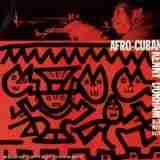
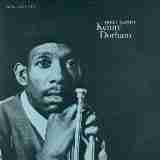

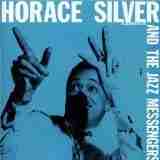
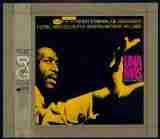
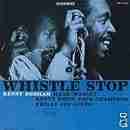

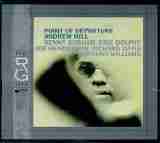
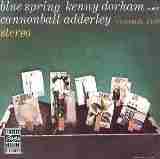









http://flophousemagazine.com/2016/04/13/kenny-dorham-trompeta-toccata-blue-note-1964/
Personnel
Kenny Dorham (trumpet), Joe Henderson (tenor saxophone), Tommy Flanagan (piano), (Richard Davis, bass), Albert Heath (drums)Recorded
on September 14, 1964 at Van Gelder Studio, Englewood Cliffs, New JerseyReleased
as BLP 8418 in 1964Track listing
Side A:Trompeta Toccata
Night Watch
Side B:
Mamacita
The Fox
Trompeta Toccata suggests Dorham played cousin to Blue Note’s front-line albums of the period like Andrew Hill’s Point Of Departure and Herbie Hancock’s My Point Of View. Dorham played on Point Of Departure alongside Richard Davis. But those albums are more dark-hued. Trompeta Toccata bears a lithe charm all its own. Like his colleagues, Dorham stretched the boundaries of hard bop, playing more freely, with a varied, more percussive style. At the same time, Dorham retained his trademark lyrical style and sweet-sour tone. The combination of the experimental Richard Davis, combative Joe Henderson, elegant Tommy Flanagan and versatile Albert Heath guarantees a lot of interesting textures. Trompeta Toccato didn’t suddenly came out of the blue. Both Dorham’s albums that preceded it, Matador (with Jackie McLean) and Una Mas broadened the horizons of the trumpeter. Dorham had cooperated with Joe Henderson as well, notably on the abovementioned Una Mas and Henderson’s dates Page One (that included the oft-covered Dorham winner Blue Bossa), Our Thing and In & Out, a title that suggests the same modus operandi as Trompeta Toccata. A key figure on a lot of Blue Note’s vanguard sessions (A series of Andrew Hill albums, Joe Henderson’s In & Out, Booker Ervin’s The Freedom Book) and the iconic Out To Lunch from Eric Dolphy) is the brilliant bassist Richard Davis. Davis’s cutting edge bass playing, including virtuoso sliding technique, is strongly featured on Trompeta Toccata. His work on the title track, advanced but firm and coherent at the same time, is a gas. The contrast between the experiments of Davis and Tommy Flanagan’s impressionistic voicings is very enjoyable.
Meanwhile Dorham and Henderson are preoccupied with the melody, stressing staccato runs that start or finish with unexpected notes. Dorham’s husky edge and playful growls mix well with Joe Henderson’s virile, angular phrases. Dorham had been a premier advocate of the Carribean theme in jazz since the early fifties. The title track, consisting of a contagious 6/8 rhythm pattern, is one of his liveliest performances.
Joe Henderson’s Mamacita is equally catching. It’s a more mellow, less pithy take than Henderson’s re-visit on his 1967 Milestone album The Kicker. The medium-tempo Night Watch’s elaborate structure doesn’t take anything away from its unmistakable blues feeling. Dorham sprinkles the landscape of the fast-paced The Fox with a shower of elegant, fluent lines.
I like the fact that Blue Note resisted the temptation to go for a hit record by putting a more straightforward danceable track like Mamacita at the start of the album, as the label often did. (which worked out pretty swell, by the way) But for Dorham’s album, Blue Note favored the lengthy title track as the opener. It immediately states Dorham’s intentions and attributes to the album’s coherence. I’m fond of the album’s brisk, ebullient atmosphere.
Unfortunately, it was Kenny Dorham’s last album as a leader. In hindsight, the underappreciated Dorham, ‘the uncrowned king of the trumpet’, as Art Blakey so aptly put it in his 1955 live show introductions for the original Jazz Messengers (as captured on Live At The Bohemia I & II), was ready for public acceptance. More than ready, having stood at the helm of bebop alongside Charlie Parker in the late forties and early fifties and with a batch of classic albums as Afro-Cuban and Quiet Kenny and sideman appearances on a series of outstanding hard bop recordings in his pocket. Instead, Dorham slid into obscurity and untimely passed away in 1972 due to kidney disease.
But if you’re going to have a swan song, Trompeta Toccata more than qualifies.
https://latinjazznet.com/reviews/cds/essential-albums/kenny-dorham-afro-cuban/
Kenny Dorham: Afro-Cuban

The fabled Spanish tinge has hovered on the fringes of jazz a lot longer ago that it was known to have been introduced into that idiom. Ferdinand “Jelly Roll” Morton may have been the first to “claim” to have introduced it into the music, but in reality it is neither a proven—but for Alan Lomax’s 1938 wax masters in the Library of Congress—nor is necessary. Suffice it to say that the phrase Spanish tinge is a reference to the belief that an Afro-Latin rhythmic touch offers a reliable method of spicing the more conventional 4/4 rhythms commonly used in jazz music. The rhythm adaptation came from mimicking the sensuously quick step of the tresillo and shuffling skip of the habanera from Cuba of the day into the 4/4 rhythmic intervals of jazz. This is what is known today as clave, and once Dizzy Gillespie got a hold of it in the 1940s it has been in much greater use—and thanks to the plethora of Afro-Caribbean folk forms—has been almost completely embraced by musicians playing in the jazz idiom. However, those priceless recordings from the 1940s and 1950s, most precious among them being a 1993 compilation featuring selections by Machito and his orchestra entitled The Original Mambo Kings – An Introduction to Afro-Cubop 1948-1954, which seduced such luminaries as Charlie Parker, Dizzy Gillespie, Harry “Sweets” Edison, Flip Phillips and Howard McGhee and the ineffable Mario Bauzá as well. Another classic recording was the 1955 recording Afro-Cuban featuring by Kenny Dorham and spotlighting the percussionist Carlos “Patato” Valdés.
Mr. Dorham had a sensationally pristine tone; husky and sensuous and full of forthright humility. His best work bespoke the rapid fire rhythm of bebop coloured in golden bronze. On Afro-Cuban he doffs his proverbial hat to the rhythms of the Afro-Caribbean part of the southern continent with full-blooded and messianic fervour. The album combines five tracks played in this vein and five tracks without the Carlos “Patato” Valdés. The Afro-Cuban music rumbles with the gravitas of the great bassist, Oscar Pettiford and baritone saxophonist Cecil Payne. Mr. Dorham soars over them like a majestic condor, howling on the wing as he mashes triplets with hot arpeggios and buttery glissandi. The group also features the dry warmth of tenor saxophonist Hank Mobley and the legendary trombonist J. J. Johnson. Carlos “Patato” Valdés is not the only crowning glory. That honour also belongs to Art Blakey, who trades “fourths” with Mr. Valdés. All of this makes for memorable charts such as “Afrodisia” the bolero-melded-into-a ballad, “Lotus Blossom.” Mr. Dorham’s playing is absolutely celestial here. The racy “Minor’s Holiday” provides a welcome change of pace for the rhythmists, but Mr. Dorham is utterly cool in his solo. Horace Silver, the pianist on this date is almost too self-effacing as he plays quietly tempered soli whenever he is called upon to do so, both here as well as on the beguiling “Basheer’s Dream.”
The rest of the album features alumni from this session—without Mr. Pettiford, who is replaced by Percy Heath. This session begins with the medium fast blues, “K.D’s Motion” in which Mr. Dorham ad-libs for four glorious choruses before handing over to Hank Mobley. Horace Silver also displays splendid form in his solo. “La Villa” features a twisting melody played at great speed. Mr. Dorham solos beautifully and yammers almost endlessly and Mr. Silver chops up a fine solo here too before the song returns to its erudite and gravity-defying unison setting. “Venita’s Dance” features a skipping rhythm swathed in a pensive melodic line. Mr. Dorham is once again brilliant and Hank Mobley is sinewy; but he is matched muscle for muscle by Cecil Payne and Horace Silver. “K.D’s Cab Ride,” another scorching bebop chart completes this unforgettable album, one that ought to make into every true enthusiast’s collection.
Track List: Afrodisia; Lotus Flower; Minor’s Holiday; Basheer’s Dream; K.D.’s Motion; La Villa; Venita’s Dance; K.D.’s Cab Ride; Minor’s Holiday.
Personnel: Kenny Dorham: trumpet; J.J. Johnson: trombone; Hank Mobley: tenor saxophone; Cecil Payne: baritone saxophone; Horace Silver: piano; Oscar Pettiford: bass (1 – 4, 9); Art Blakey: drums; Carlos “Patato” Valdes: congas (1 – 4, 9); Ritchie Goldberg: cowbell (1 – 4, 9); Percy Heath: bass (5 – 8).
Label: Blue Note Records | Release date: January 1955
Website: allmusic.com | Buy music on: amazon

About Kenny Dorham
Dorham was one of the most active bebop trumpeters. He played in the big bands of Lionel Hampton, Billy Eckstine, Dizzy Gillespie, and Mercer Ellington and the quintet of Charlie Parker. He was a charter member of the original cooperative Jazz Messengers. He also recorded as a sideman with Thelonious Monk and Sonny Rollins, and he replaced Clifford Brown in the Max Roach Quintet after Brown’s death in 1956. In addition to sideman work, he led his own groups, including the Jazz Prophets (formed shortly after Art Blakey took over the Jazz Messengers name). The Jazz Prophets, featuring a young Bobby Timmons on piano, bassist Sam Jones and tenor man J. R. Montrose with guest Kenny Burrell on guitar, recorded a live album ’Round About Midnight at the Café Bohemia in 1956 for Blue Note.
This town is a country and blues burg, a rock-without-borders haven, a place that embraces songwriters who can make poetry from their past. But you don’t hear much about Austin’s legacy as a jazz town. It’s quite amazing, then, to realize that a pair of Austinites, trumpeter Kenny Dorham and bassist Gene Ramey, not only backed the likes of Charlie Parker and Lester Young, but played on many of the late-’40’s and early-’50s Thelonious Monk sessions one critic called “among the most significant and original in modern jazz.” To go from the all-black L.C. Anderson High School in East Austin to 52nd Street in Manhattan and play with the best is a trek that only talent can guide. But Dorham and Ramey, who both picked up a lot of session work by knowing how to best shade the outline of the spotlight, are not widely known except to jazz aficionados. Dorham, who died of a kidney disease in 1972 at 48, was in the shadow of the three top trumpet players of the bop era: Miles Davis, Dizzy Gillespie and Fats Navarro. But he’d settle for the “thinking man’s trumpet player” tag.
Those on the panel to decide who will be the first 10 inductees in the Austin Music Memorial, which will be unveiled on a terrace of the Long Center in March 2008, will make a gutsy, yet justifiable move if they choose two jazz figures in that first group.
But if only one jazzman can be chosen this first year, make it Dorham, who, unlike Ramey, was part of a music scene while he lived in Austin. Originally a sax player, Ramey (1913-1984) went to Anderson before it had a band and didn’t even learn how to play the bass until he moved to Kansas City as a young man.
Dorham was part of a group of young horn-blowing cats who’d sneak off after band practice, away from the authoritative glare of Sousa-lovin’ band director B.L. Joyce, to play improvisational jazz in the backyard of Roy and Alvin Patterson at 1709 Washington Ave. Also in that horn circle were Gil Askey, who would go on to be the top horn arranger at Motown; trombonist Buford Banks (Martin’s father); and a pair of swinging trumpet players, Paris Jones and Rip Ross.

In a 2004 interview with the American-Statesman, Alvin Patterson (who would replace Joyce as Anderson’s band director in 1955) recalled Dorham as a quiet, deep fellow who was “very thoughtful and perceptive.” Dorham would often defer to the older players, especially Hermie Edwards, who everyone knew was the baddest horn player on the East Side.
After high school, Dorham attended Wiley College in Marshall, where he majored in chemistry. But after only a year in college, Dorham was drafted into the Army. He was discharged in 1943.
Dorham’s first gig was in California with the Russell Jacquet Orchestra, according to Dave Oliphant’s Texan Jazz (University of Texas Press). Dorham got his big break in 1945 when he replaced Navarro in Billy Eckstine’s orchestra, the first bop big band, from whose ranks flowed the likes of Parker, Davis, Gillespie, Dexter Gordon and Sarah Vaughan.
Patterson met up with his former marching band mate when Dorham was playing with Eckstine’s band in Boston. “He used to copy Erskine Hawkins,” Patterson recalled of the Anderson days. “Kenny loved to play that ‘Tuxedo Junction.’ But he started getting into his own thing.”
On Christmas Eve 1948, Miles Davis couldn’t make a gig with the Charlie Parker Quintet, so he recommended Dorham as a replacement. The gig lasted two years, including a sensational stint in 1949 in Paris, at that city’s first international jazz festival.
Although Dorham played with Parker on the sax great’s final public performance in 1955, he spent most of the early ’50s freelancing for Monk, Bud Powell, Sonny Stitt and others. In 1954, he co-founded the highly influential Jazz Messengers with Art Blakey.
Later, Dorham led several of his own groups, recording such highly regarded albums as “Afro Cuban” in 1955, “Jazz Contrasts” in ’57, and his most highly regarded LP, “Una Mas,” in ’63.
“In Miles’ autobiography, he writes about what an underrated player Kenny Dorham was,” says Thomas Heflin, whose New Six Jazz Project plays a birthday tribute to Dorham on Thursday at the Elephant Room. “He wasn’t flashy like Dizzy (Gillespie) or quite as stylish as Miles, but there was so much lyricism in the way Dorham articulated notes.”
With such tenderness and vulnerability in his dark tones, Dorham has been called the most poetic of trumpet players. “He embodied the Blue Note era,” Heflin says, in reference to the signature label of 1950s and ’60s jazz.
He was also a bluesy singer on occasion, wrote the jazz standard “Blue Bossa,” and he helped discover and nurture young talent such as tenor sax player Joe Henderson.
Patterson, who recently passed away, was able to hang out with Dorham one last time, when Dorham returned home to play the 1966 Longhorn Jazz Fest at the old Disch Field. Also booked at the festival were John Coltrane, Lightnin’ Hopkins, Elvin Jones, Dave Brubeck and ex-Austinite Teddy Wilson.
That’s right, Austin can also lay (tentative) claim to Billie Holiday’s favorite piano man, Wilson, who crossed the color line in 1935 when he joined the Benny Goodman Trio (with drummer Gene Krupa). The son of schoolteachers, Wilson was born here, but moved to Alabama at age 6 when his father got a job teaching at the Tuskegee Institute.
Dorham and Ramey, along with Nat King Cole’s guitarist Oscar Moore, are the greatest representatives of Austin to the jazz world because their playing was in service to the song. Dorham gets special mention here because he influenced Martin Banks, who played trumpet in the house band of the Apollo Theater, and who passed the trumpet torch to the next generation of Austin players, including Ephraim Owens.
There’s always going to be a new generation of deep-thinking cats to keep Dorham’s legacy alive.
THE MUSIC OF KENNY DORHAM: AN EXTENSIVE VIDEO OVERVIEW, A CROSS SECTION OF RECORDINGS, MUSICAL ANALYSIS AND COMMENTARY, PLUS VARIOUS INTERVIEWS WITH KENNY DORHAM:
Kenny Dorham Quartet - Lotus Blossom
"SHOW BOAT" - Kenny Dorham quintet (FULL ALBUM), 1960
Kenny Dorham - 1961 - Whistle Stop - 01 - Philly Twist
Kenny Dorham - ALL THE BEST (FULL ALBUM)
Kenny Dorham - YouTube
Kenny Dorham - But Beautiful
Kenny Dorham Memorial. - YouTube
Kenny Dorham Quintet - This Love of Mine - YouTube
Kenny Dorham - This Is The Moment (Full Album)
Kenny Dorham and The Jazz Prophets. - YouTube
Kenny Dorham - 1955 - Afro-Cuban - 01 Afrodisia - YouTube
Kenny Dorham Quartet - Stockholm 1963 - YouTube
Kenny Dorham & Jackie McLean — "Inta Somthin'" [Full ... - YouTube
Blue Bossa I Kenny Dorham I Jazz - YouTube
Kenny Dorham - Falling In Love With Love - YouTube
Kenny Dorham Live at the Golden Circle - YouTube
Kenny Dorham - Una mas - YouTube
Kenny Dorham - Afrodisia - YouTube
Kenny Dorham Quintet - Dorian - YouTube
Kenny Dorham - My Ideal - YouTube
Kenny Dorham - 1953 - Quintet - 01 An Oscar for Oscar - YouTube
Kenny Dorham Quintet 1963 - It Could Happen To You - YouTube
Kenny Dorham – The Flamboyan, Queens, NY, 1963 - YouTube
Kenny Dorham / Mack the Knife - YouTube
Ease It! - Kenny Dorham - YouTube
Kenny Dorham
https://en.wikipedia.org/wiki/Kenny_Dorham
Kenny Dorham
McKinley Howard "Kenny" Dorham (August 30, 1924 – December 5, 1972) was an American jazz trumpeter, singer, and composer. Dorham's talent is frequently lauded by critics and other musicians, but he never received the kind of attention or public recognition from the jazz establishment that many of his peers did. For this reason, writer Gary Giddins said that Dorham's name has become "virtually synonymous with underrated."[1] Dorham also composed the jazz standard "Blue Bossa," which first appeared on Joe Henderson's album Page One.
Biography
Dorham was one of the most active bebop trumpeters. He played in the big bands of Lionel Hampton, Billy Eckstine, Dizzy Gillespie, and Mercer Ellington and the quintet of Charlie Parker. He was a charter member of the original cooperative Jazz Messengers. He also recorded as a sideman with Thelonious Monk and Sonny Rollins, and he replaced Clifford Brown in the Max Roach Quintet after Brown's death in 1956. In addition to sideman work, Dorham led his own groups, including the Jazz Prophets (formed shortly after Art Blakey took over the Jazz Messengers name). The Jazz Prophets, featuring a young Bobby Timmons on piano, bassist Sam Jones, and tenorman J. R. Monterose, with guest Kenny Burrell on guitar, recorded a live album 'Round About Midnight at the Cafe Bohemia in 1956 for Blue Note.
In 1963 Dorham added the 26-year-old tenor saxophonist Joe Henderson to his group, which later recorded Una Mas (the group also featured a young Tony Williams). The friendship between the two musicians led to a number of other albums, such as Henderson's Page One, Our Thing and In 'n Out. Dorham recorded frequently throughout the 1960s for Blue Note and Prestige Records, as leader and as sideman for Henderson, Jackie McLean, Cedar Walton, Andrew Hill, Milt Jackson and others.
Dorham's quintet originally consisted of some well-known jazz musicians: Tommy Flanagan (piano), Paul Chambers (double bass), and Art Taylor (drums). Their recording debut was Quiet Kenny for the New Jazz label, an album which featured mostly ballads. An earlier quartet featuring Dorham as co-leader with alto saxophone player Ernie Henry had released an album together under the name "Kenny Dorham/Ernie Henry Quartet." They produced the album 2 Horns / 2 Rhythm for Riverside Records in 1957 with double bassist Eddie Mathias and drummer G.T. Hogan. In 1990 the album was re-released on CD under the name "Kenny Dorham Quartet featuring Ernie Henry."[2][3]
During his final years Dorham suffered from kidney disease, from which he died on December 5, 1972, aged 48.
Discography
As leader
- 1953: Kenny Dorham Quintet (Debut)
- 1955: Afro-Cuban (Blue Note)
- 1956: 'Round About Midnight at the Cafe Bohemia (Blue Note)
- 1956: And The Jazz Prophets Vol. 1 (ABC-Paramount ABC-122)
- 1957: Jazz Contrasts (Riverside) featuring Sonny Rollins
- 1957: 2 Horns / 2 Rhythm (Riverside) featuring Ernie Henry
- 1958: This Is the Moment! (Riverside)
- 1959: Blue Spring (Riverside) with Cannonball Adderley
- 1959: Quiet Kenny (New Jazz)
- 1960: The Kenny Dorham Memorial Album (Xanadu)
- 1960: Jazz Contemporary (Time)
- 1960: Showboat (Time)
- 1961: Whistle Stop (Blue Note)
- 1961: Inta Somethin' (Pacific Jazz)
- 1962: Matador (United Artists)
- 1963: Una Mas (Blue Note)
- 1963: Scandia Skies (SteepleChase)
- 1963: Short Story (SteepleChase)
- 1964: Trompeta Toccata (Blue Note)
As sideman
With Toshiko Akiyoshi
- Toshiko at Top of the Gate (1968)
- Bash! (Jazzline, 1961) - rereleased under Dorham's name as Osmosis (Black Lion) in 1990
- Andy and the Bey Sisters (1959)
- On Tour (studio recording) (RCA Victor 1957)
- The Jazz Messengers at the Cafe Bohemia Volume 1 (1955)
- The Jazz Messengers at the Cafe Bohemia Volume 2 (1955)
- Ease It (1961; aka West 42nd Street)
- Fontainebleau (1956)
- Quartet/Quintet/Sextet (1954)
- Jazz by Gee (Riverside, 1956)
- Fire in the West aka That Geller Feller (Jubilee 1957) (Josie 1962) (Fresh Sound 2003)
- The Modern Touch (Riverside, 1957)
- Bull's Eye! (Prestige, 1968)
With Ernie Henry
- Presenting Ernie Henry (Riverside, 1956)
- Last Chorus (Riverside, 1956–57)
- Point of Departure (1964)
- Roll 'Em Bags (Savoy, 1949)
- Invitation (1962)
- Starting Time (Jazzland, 1961)
- In the World (Strata-East, 1969 [1972])
- Eastward Ho! Harold Land in New York (Jazzland, 1960)
- That's Him! (Riverside, 1957)
- It's Magic (1958)
- Abbey Is Blue (1959)
- Vertigo (Blue Note, 1962)
- Casual Affair (1959)
- Gil's Guests (1956)
- You've Got a Date with the Blues (MetroJazz, 1959)
- Mobley's 2nd Message (1956)
- Curtain Call (Blue Note, 1957)
- Genius of Modern Music: Volume 2 (Blue Note, 1952)
- Meet Oliver Nelson (New Jazz, 1959)
- Zodiac (1968)
- Patterns of Jazz (Savoy, 1956)
- Zodiac (Strata-East, 1968 [1973])
- The Oscar Pettiford Orchestra in Hi-Fi Volume Two (ABC-Paramount, 1957)
- Max Roach + 4 (EmArcy, 1956)
- Jazz in ¾ Time (EmArcy, 1957)
- The Max Roach 4 Plays Charlie Parker (EmArcy, 1958)
- MAX (Argo, 1958)
- Moving Out (Prestige, 1954)
- Rollins Plays for Bird (Prestige, 1956)
- Sonny Boy (Prestige, 1956 [1961])
- Pretty for the People (Savoy, 1957)
- Horace Silver and the Jazz Messengers (Blue Note, 1954)
- Hard Driving Jazz (1958)
- Cedar! (Prestige, 1967)
- Live at the Five Spot (United Artists, 1959)
- Barney (1959)
- Un Temoin Dans La Ville (1959)
- Pairing Off (1956)
There are three Kenny Dorham tribute CDs. Music of Kenny Dorham by Don Sickler (1994). A Tribute to Kenny Dorham by the Charles Davis All Stars (2010). Jay Sanders Plays the Music of Kenny Dorham by Jay Sanders (2011).
References
- Freeman, Phil (January 15, 2013). "Spotlight: Doing the Philly Twist: Kenny Dorham's Whistle Stop". bluenote.com. Blue Note Records.
- Yanow, Scott (2000). Bebop. Miller Freeman Books. pp. 79–81. ISBN 0-87930-608-4.




